Spectacular Start to 10th Anniversary Šibenik Dance Festival
July 20, 2021 – The streets of Šibenik are overflowing with life this July. On town squares, streets and in parks, different events appeal to every generation and demographic. On Monday 19th, the opening of the Supertoon animation festival sees families gather to watch feature-length cartoons in the Old Town streets. Above their heads, in St. Michael's Fortress, a much more startling evening's entertainment is taking place. It's the opening of the 10th anniversary Šibenik Dance Festival.
'Burning Water' by renowned Greek choreographer Andonis Foniadakis is not always easy to watch. Commissioned specifically for the ballet company of Croatian National Theatre Ivan pl. Zajc in Rijeka, the dancers have had a year to perfect it since its Capital of Culture premiere.
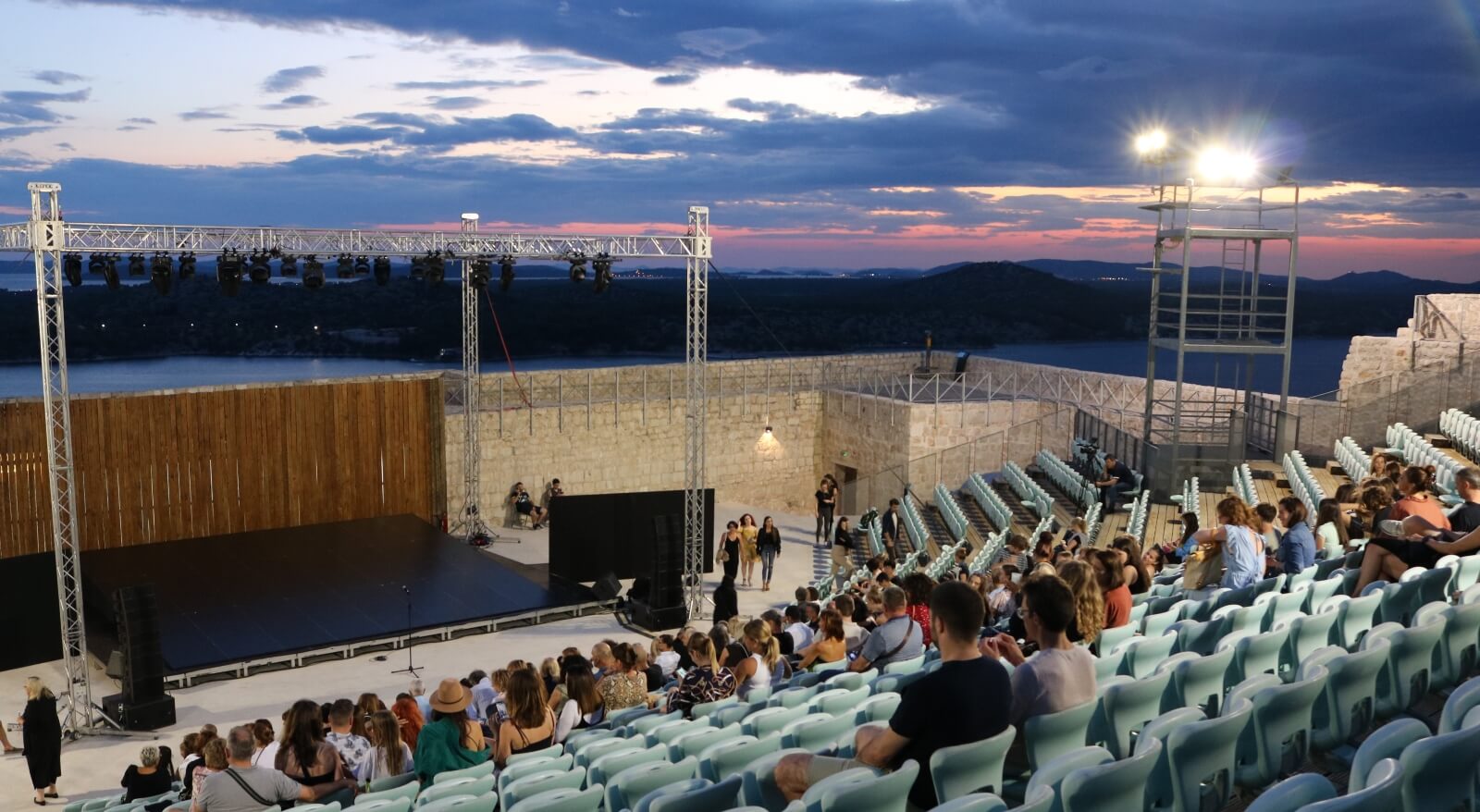 A spectacular backdrop of Šibenik, the Adriatic and sunset greet attendees at the opening of the 10th annual Šibenik Dance Festival © Marc Rowlands.
A spectacular backdrop of Šibenik, the Adriatic and sunset greet attendees at the opening of the 10th annual Šibenik Dance Festival © Marc Rowlands.
The audience takes their seats at sunset. But, as the performance begins, everything is enveloped in black. Minimally lit, androgynous dancers arrive on stage in a most unorthodox manner, their bodies twisted and contorted beyond regular, recognisable movement.
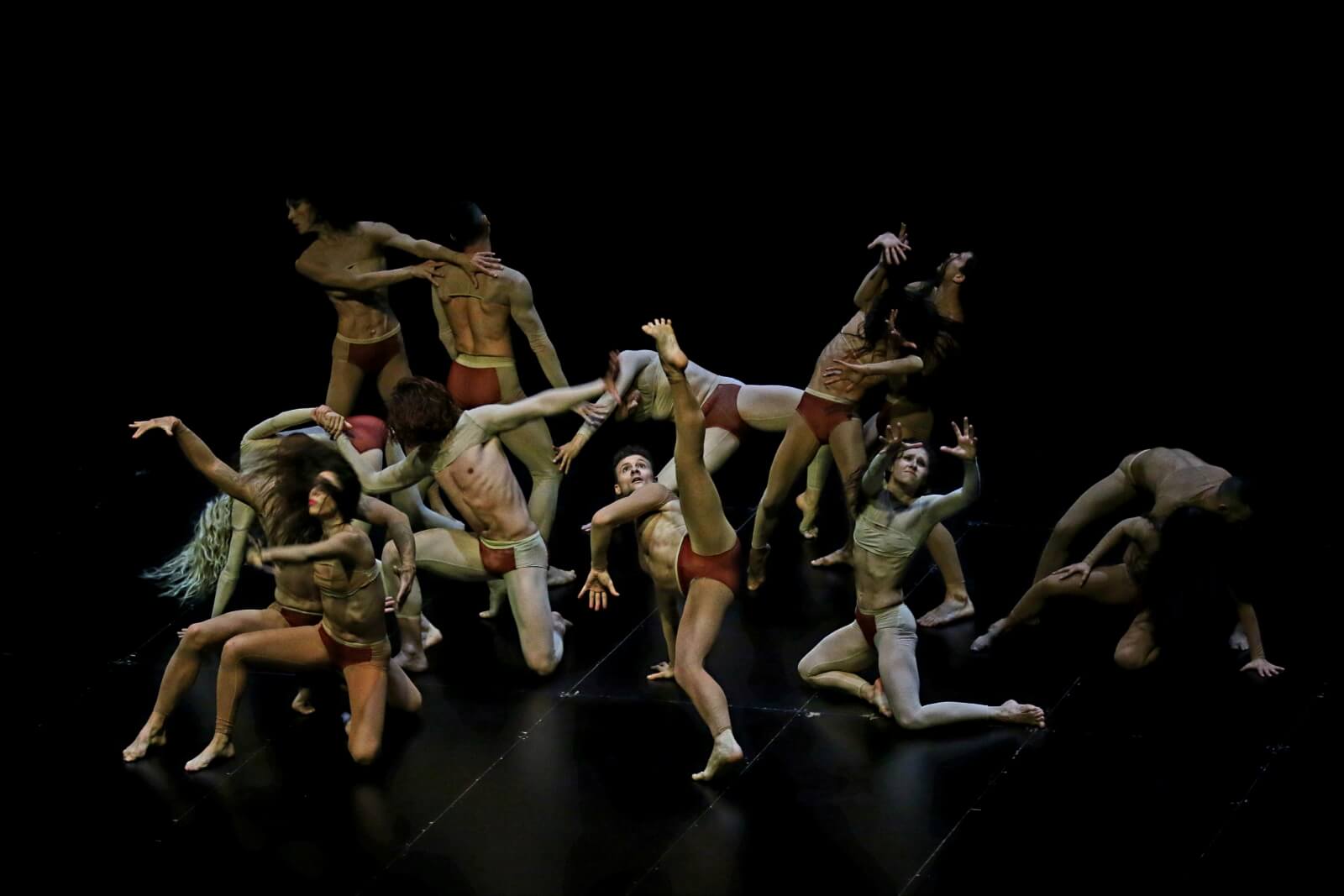
“That is the signature style of Andonis Foniadakis,” says Šibenik Dance Festival director Zorana Mihelčić. “Everybody knows it because he's so well established; very nervous, interrupted movements. I personally love his work and right now he's one of the most frequently requested choreographers in the world.”
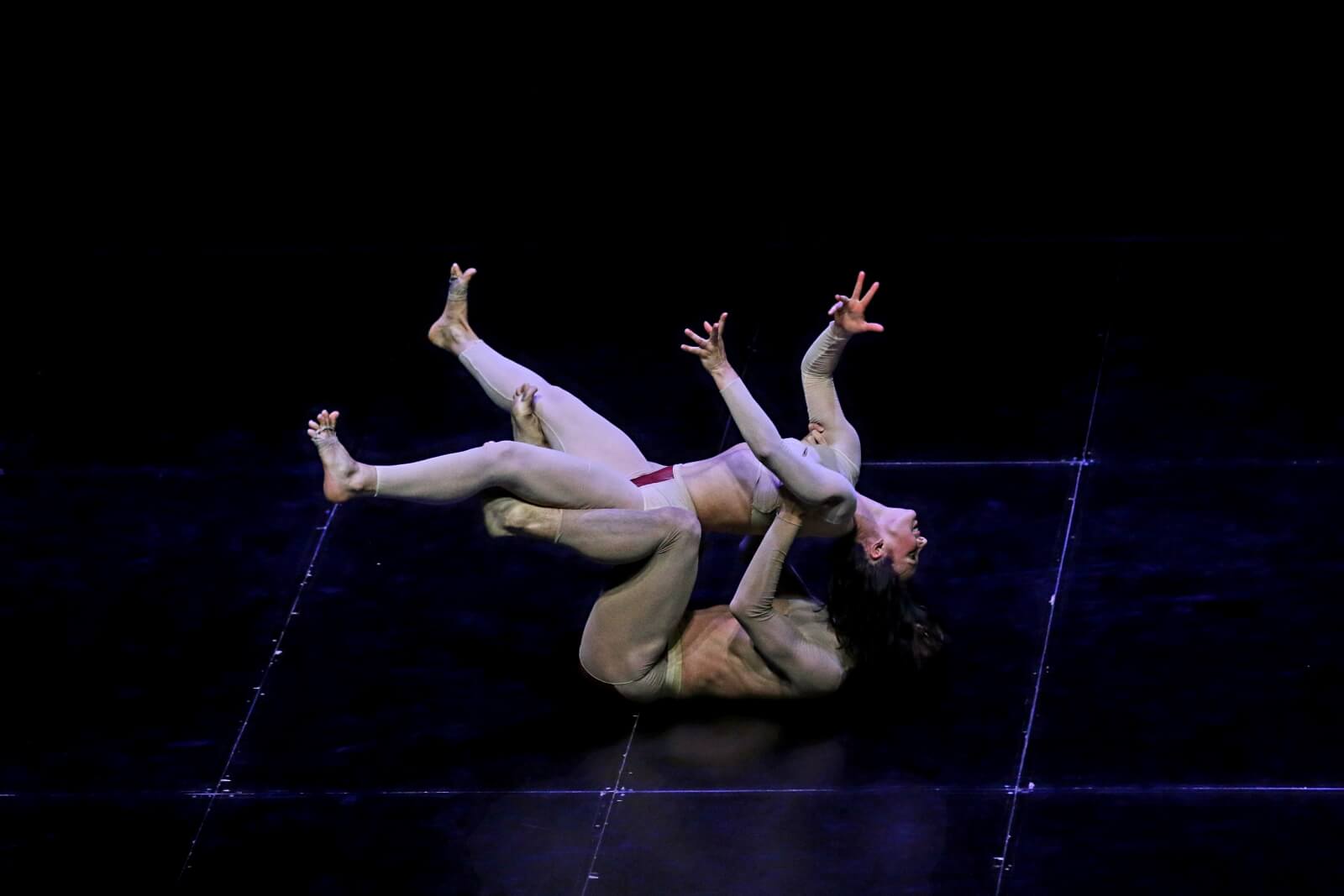
Having helmed Šibenik Dance Festival from its start to this, its 10th anniversary, Mihelčić is more than satisfied with its progress. And, so she should be. In the seats on opening night, German, English, Slovenian, Croatian, and at least one Scandinavian language are heard. On the stage, an international touring ballet troupe and world-renowned choreographer. This is a far cry from the festival's beginnings.
Evolution of Šibenik Dance Festival
“We started Šibenik Dance Festival 10 years ago as a small review of dance studios and awarded dancers. But not, professionals,” says Mihelčić. “At that time, it was held in the square just in front of Šibenik cathedral. It grew steadily each year until 2014 when the first of our fortresses was renovated. Within a month of St. Michael's opening, we secured permission to hold our opening night there. That really put us on the map and we've been there ever since.”
“We now have two programmes running simultaneously; we kept the amateur and student dancers programme, which was our foundation. But, now we have professional, international dance companies as a major part of each event.”
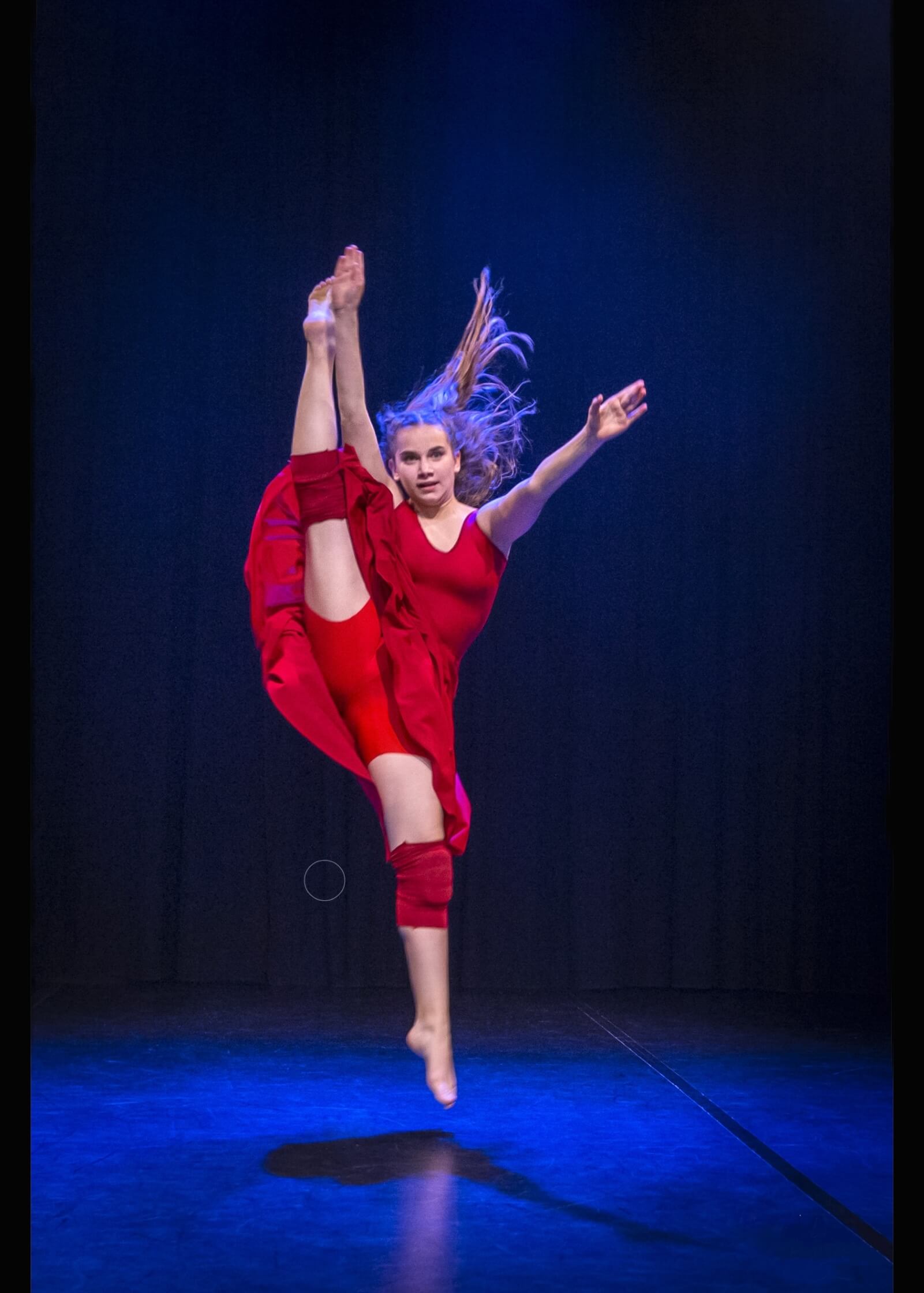 Ilijana's dancers, part of the student / fringe programme of Šibenik Dance Festival © Mladen Božičković
Ilijana's dancers, part of the student / fringe programme of Šibenik Dance Festival © Mladen Božičković
Continuing throughout this week, Šibenik Dance Festival manages to entertain everyone currently in Šibenik. Committed fans of contemporary dance and art will visit more spectacular venues like Barone Fortress. On Wednesday 21st, a visit there by Zoltán Fodor's Inversedance – an incredibly well-respected dance company from Budapest. They arrive with a new performance 'You and the World'. Its premiere was just one month ago. The next night, Thursday 22 July, jazz and hip hop dancing, again at Fortress Barone and the Association of Ballet Artists of Serbia.
In Arsen Art House, conceptual and contemporary pieces by Rita Gobi from Hungary and regional star Isidora Stanišić on Tuesday 20th. The festival concludes in the same venue on Friday 23 with a conceptual piece called 'Body Shots'. It's a co-production between Germany's CocoonDance Company and Zagreb Dance Center.
 Body Shots by CocoonDance / Zagreb Dance Center © Neven Petrović.
Body Shots by CocoonDance / Zagreb Dance Center © Neven Petrović.
Although, for many visitors, the highlight of Šibenik Dance Festival is still the public performance on the city streets by youngsters and amateur dancers.
“This year, it's a really exciting mixture, accessible to everyone,” says Zorana Mihelčić, clearly excited about the performances to come. “20 minutes of great tap dancers from Dubrovnik, then 10 to 15 minutes of very young students from the ballet school in Split. After that, contemporary dancers from Požega, also salsa, hip hop fusion, classical and contemporary ballet. It will be great.”
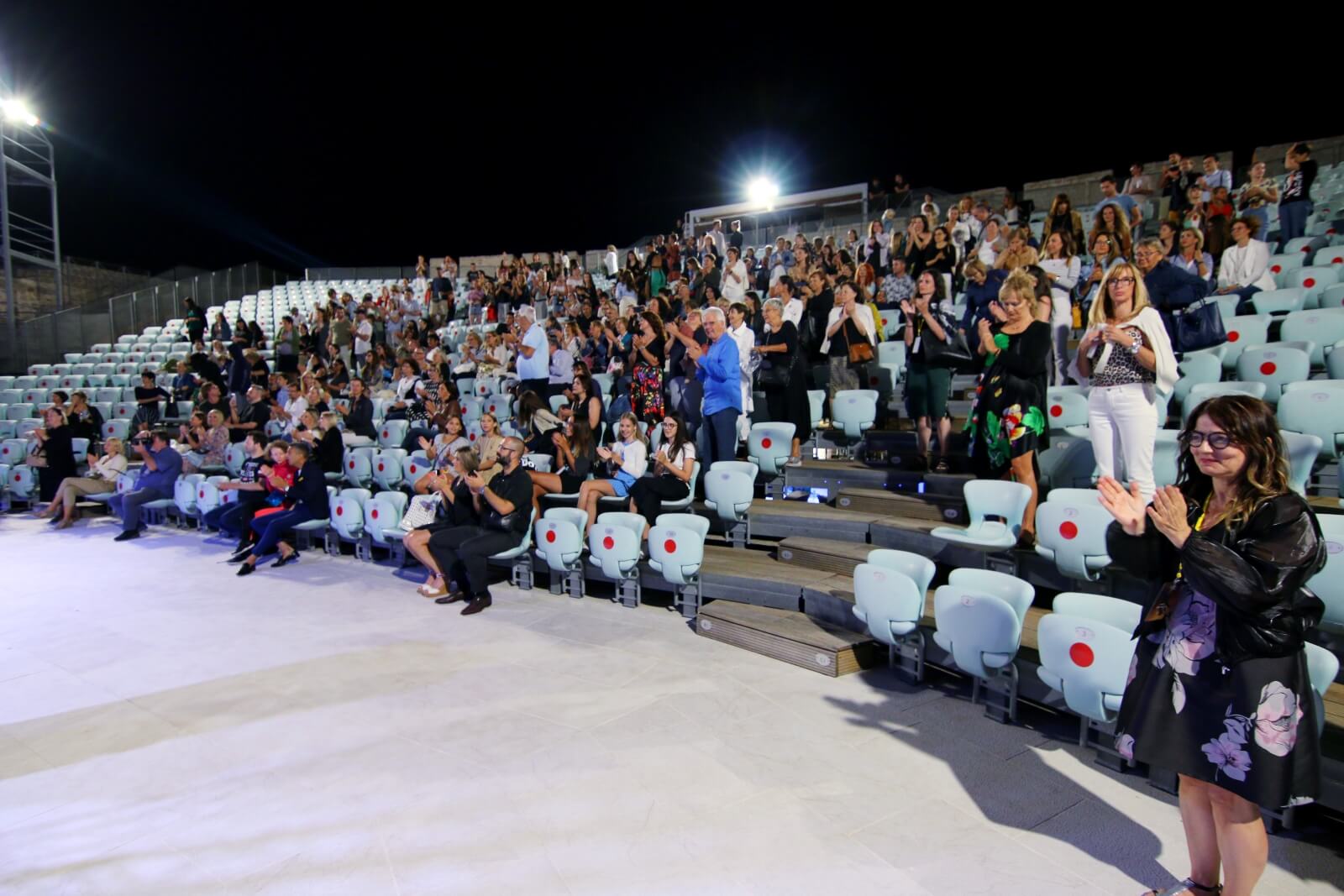 As shown above, final applause for the 2021 festival opening night. Festival director Zorana Mihelčić can be seen in the bottom right-hand corner.
As shown above, final applause for the 2021 festival opening night. Festival director Zorana Mihelčić can be seen in the bottom right-hand corner.
The free public performance of youngsters and amateurs at the 10th anniversary of Šibenik Dance Festival takes place at Poljana square, just in front of Šibenik National Theatre on Wednesday 21 and Thursday 22 July between the hours of 19.00 and 22.00.
All photos © Šibenik Dance Festival unless otherwise accredited.
Unique and UNESCO: The Fascinating and Futuristic Fortresses of Šibenik
May 12, 2021 – Using vivid modern techniques like 3D mapping and augmented reality, each of the Fortresses of Šibenik is unique. Here, we take a closer look at these fascinating, must-visit venues.
The city of Šibenik is surrounded by some of the most distinctive waters in Dalmatia. To the city's northeast, the great Krka river drops over gushing waterfalls, meeting Cikola river in the epic Krka National Park. Thereafter, it flows first into Lake Prokljan, then the bay of Šibenik. Around the water's edge in Šibenik, people enjoying in bars and restaurants. Or, in warmer months, sunbathing and swimming in the sea.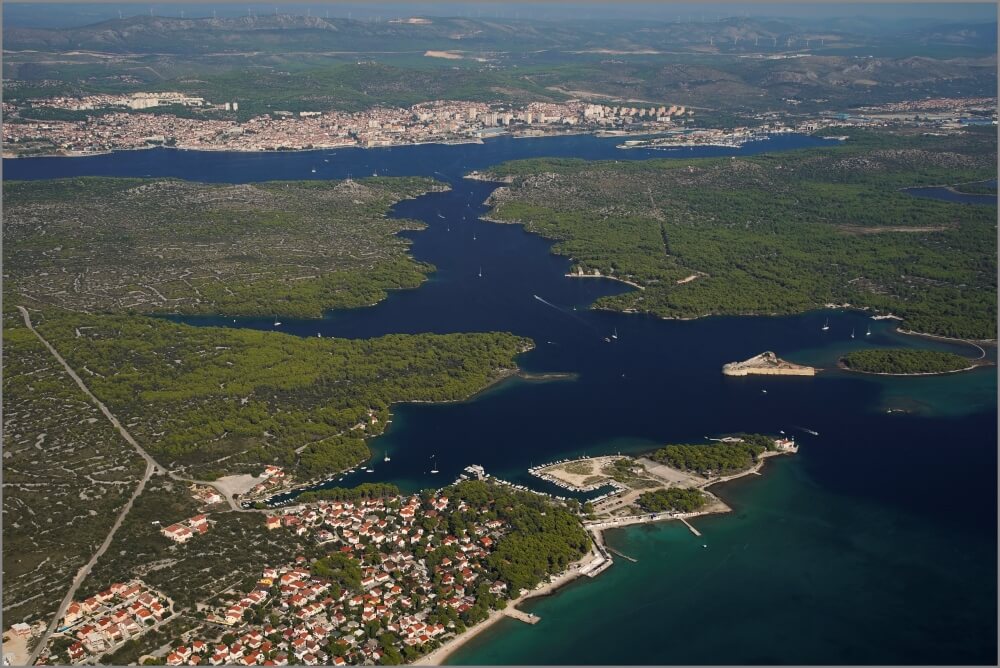 The Channel of St. Ante, with the City of Šibenik in the background and St. Nikola's Fortress in the foreground @ TZ Šibenik.
The Channel of St. Ante, with the City of Šibenik in the background and St. Nikola's Fortress in the foreground @ TZ Šibenik.
And yet, these special waters are not the only thing that makes Šibenik unique. There's much more to this city than just the sea. Not least, the unique Fortresses of Šibenik.
Actually, it's not that unusual to find a fortress, castle or fortifications in Croatian cities. After all, for several hundred years, this was the frontline of European defense against the invading Ottoman empire. However, Šibenik is unique within the entire Balkan region to have not one, but four fortresses from that era. Not only are they very well preserved, but also they have been completely renovated and thoroughly modernized.
Surprising multimedia and fascinating digital content now combine with fantastic views and unique architecture to draw visitors to the Fortresses of Šibenik. Subsequently, the four Fortresses of Šibenik now make up an unmissable part of any visit to the city.
Fortresses of Šibenik: St. Michael's Fortress
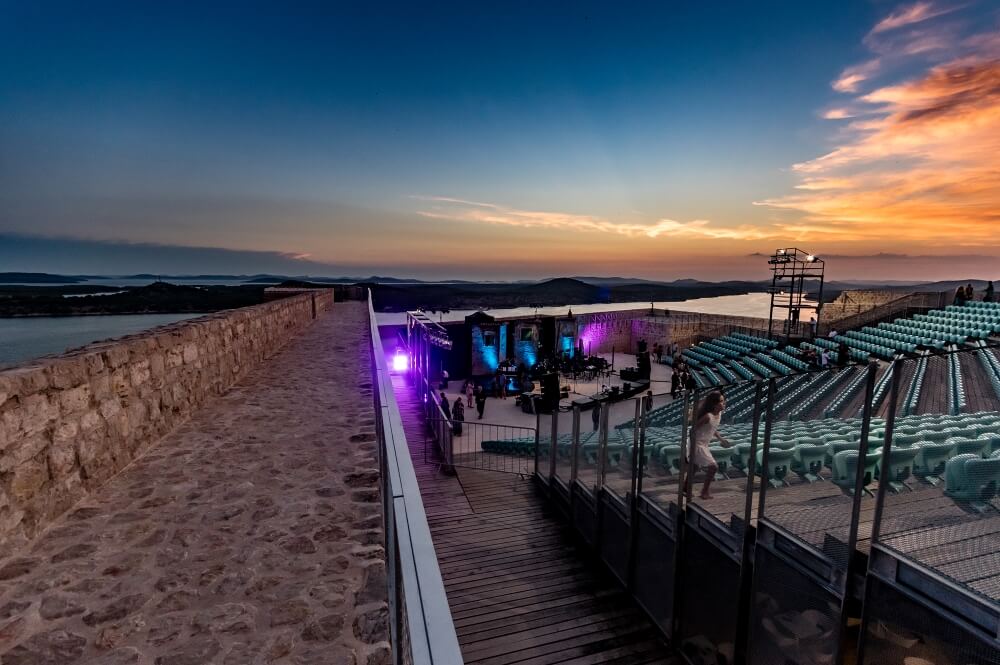 Fortresses of Šibenik: St. Michael's Fortress @ TZ Šibenik.
Fortresses of Šibenik: St. Michael's Fortress @ TZ Šibenik.
The oldest of the four fortresses of Šibenik, iconic St. Michael's is today known as one of the most prestigious open-air concert stages on this side of the Adriatic. But, it also a place where you can learn fascinating history via spectacular modern technology. Deep within the fortress, 3D mapping techniques make 15th-century water tanks spring to life. This vivid display will transport you through centuries of exciting Šibenik history, including the story of St. Michael and the dragon.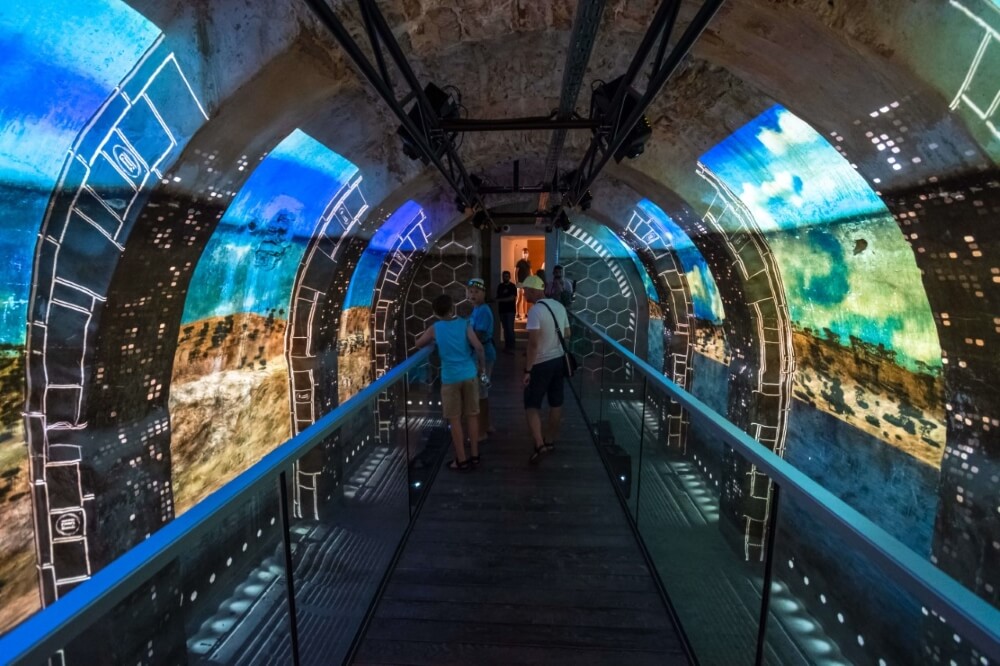 Vivid multimedia trails through the Fortresses of Šibenik @ TZ Šibenik.
Vivid multimedia trails through the Fortresses of Šibenik @ TZ Šibenik.
Fortresses of Šibenik: Barone Fortress
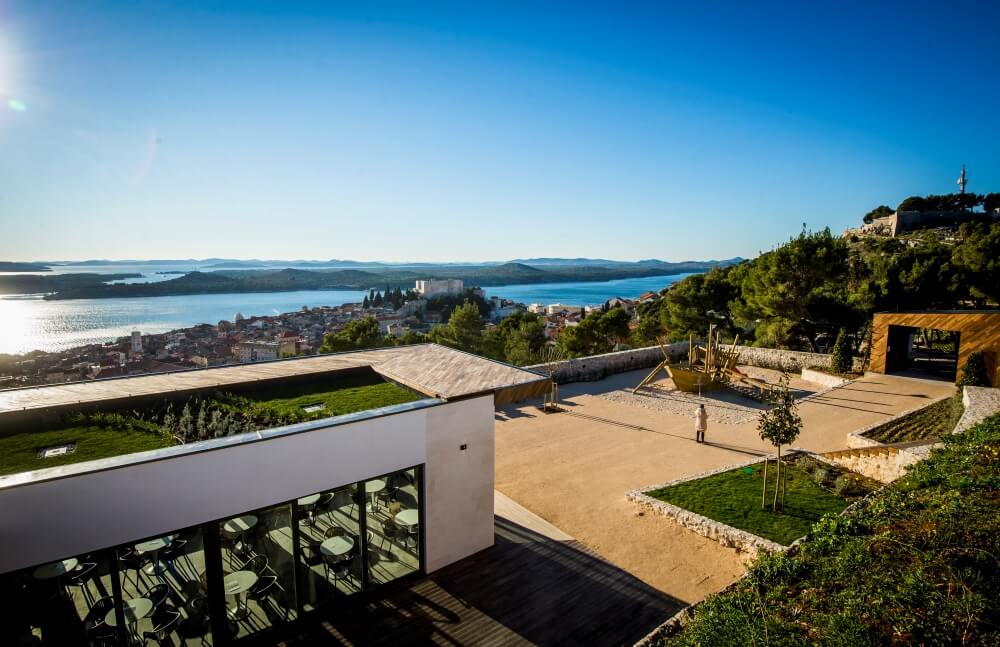 Barone Fortress @ TZ Šibenik.
Barone Fortress @ TZ Šibenik.
The latest of the four Fortresses of Šibenik to be renovated, in Barone Fortress you get a whole new dimension of reality. Actually, Barone Fortress successfully repelled the fiercest attacks of the Ottomans in the 17th century and therefore changed the course of history in this area. Via augmented reality (AR), you can relive the sights and sounds of these key moments in European history. After the thrill of experiencing the battles, you'd be well advised to take a breather on the Barone Bar’s terrace. There, you can enjoy views of the entire city, while any younger visitors can have fun on the children’s playground.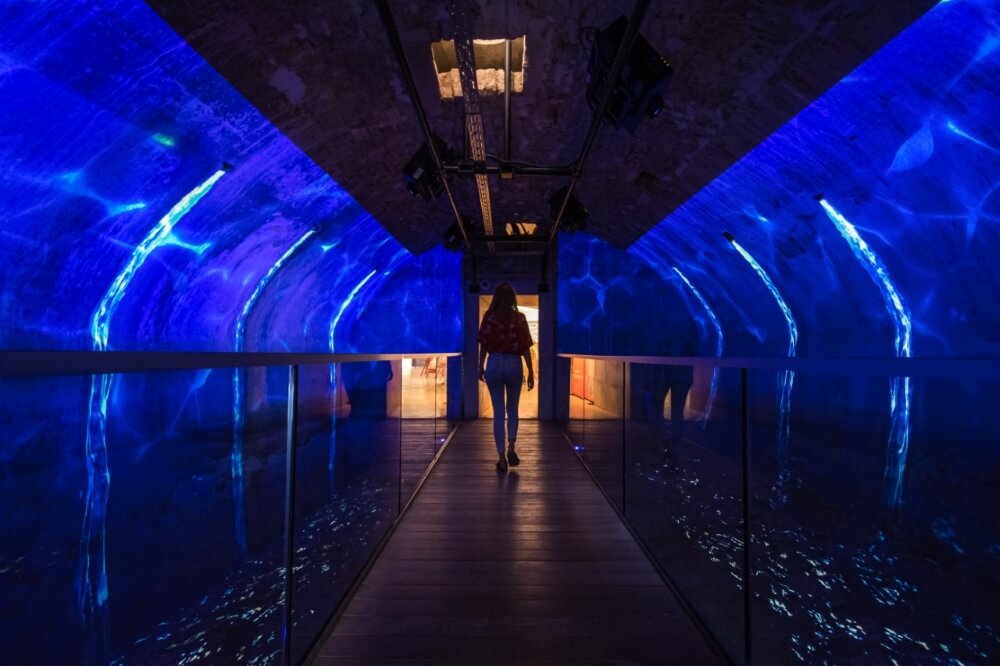 Vivid multimedia trails through the Fortresses of Šibenik @ TZ Šibenik.
Vivid multimedia trails through the Fortresses of Šibenik @ TZ Šibenik.
Fortresses of Šibenik: St. Nikola's Fortress
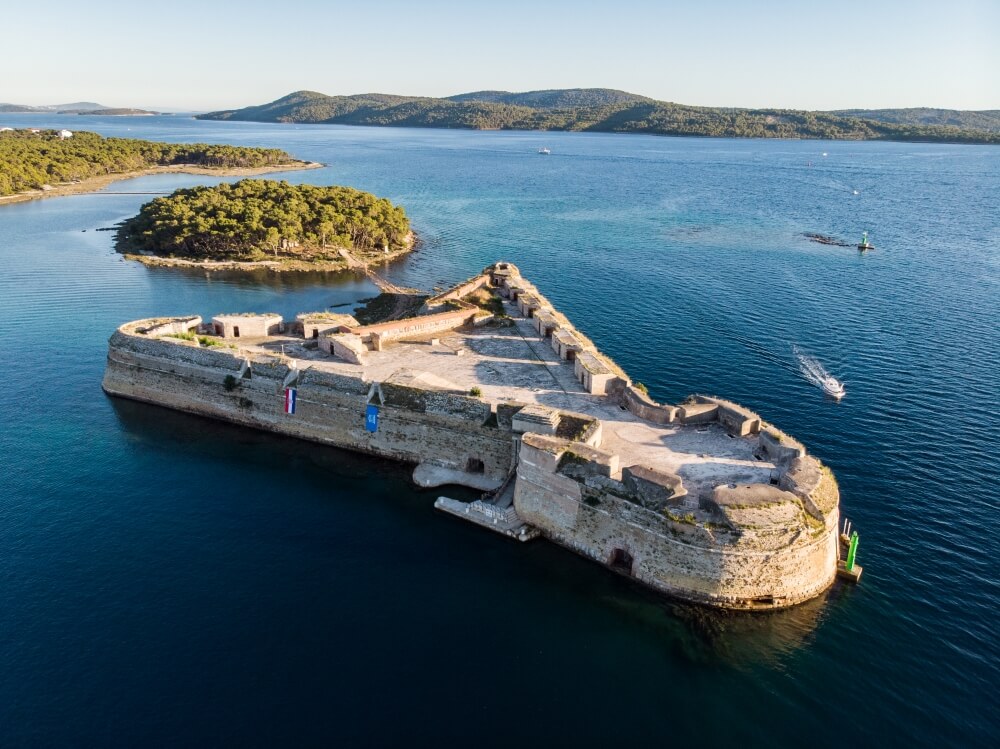 Fortresses of Šibenik: The UNESCO-protected St. Nikola's Fortress @ TZ Šibenik.
Fortresses of Šibenik: The UNESCO-protected St. Nikola's Fortress @ TZ Šibenik.
Within the Fortresses of Šibenik, St. Nicholas is unique. Not only is it the only one that sits on its own island within the sea, but also is a unique Renaissance-style Venetian fortification. As such, it is protected as a UNESCO monument of world architectural heritage.
The fortress was built on the island of Ljuljevac, in the Channel of St. Ante, where the waters of Šibenik bay meet the Adriatic. Owing to its protected status, the best way to access the fortress is on an official tour. Lasting around two hours, the tour takes you from Šibenik down the channel by boat. After arriving at the fortress, you're guided rounded the structure on a tour detailing the architectural highlights and history.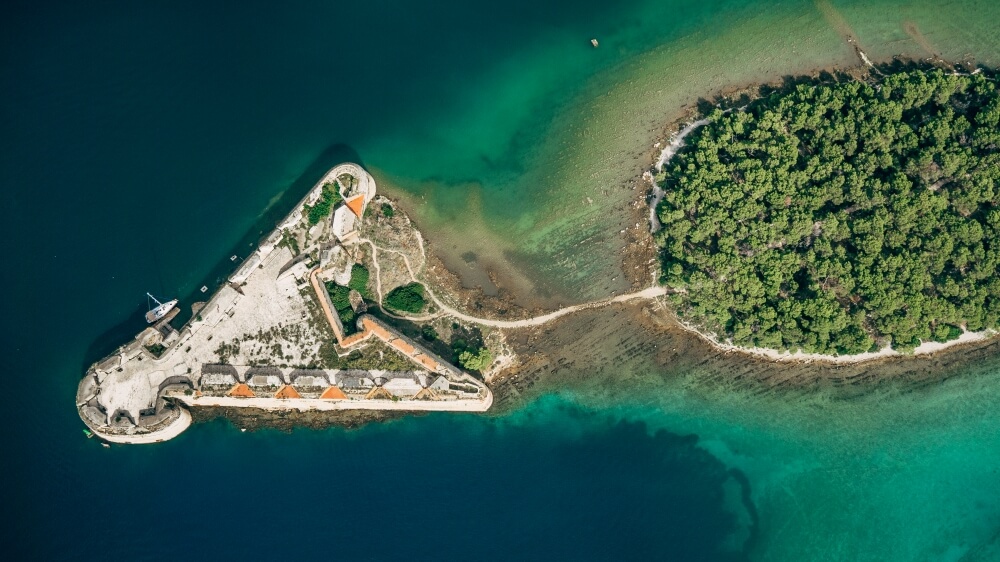 Fortresses of Šibenik: The UNESCO-protected St. Nikola's Fortress @ TZ Šibenik.
Fortresses of Šibenik: The UNESCO-protected St. Nikola's Fortress @ TZ Šibenik.
Fortresses of Šibenik: St. John's Fortress
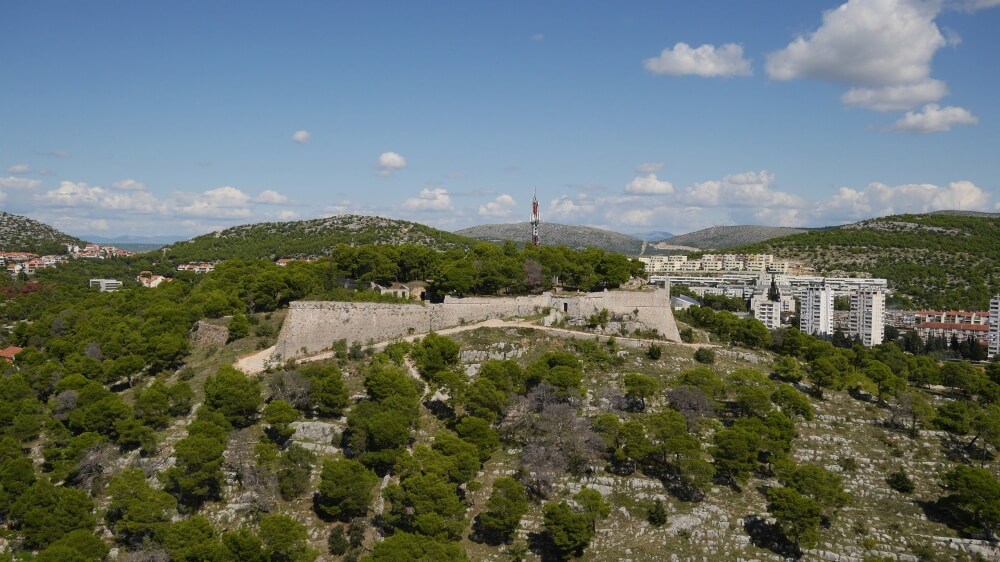 St. John's Fortress @ TZ Šibenik.
St. John's Fortress @ TZ Šibenik.
The medieval church of St. John the Baptist that once stood on a hill, north of Šibenik's historical centre, dates to at least 1444. It is around this church that St. John's Fortress rose up. Naturally, it's also where the name comes from. In early 1646, when it was speedily built, alongside its peers, it helped save the city from the Ottomans. Later, it continued to be used by resident armies all the way up until the times of Yugoslavia. Today, St. John's is the last of the Fortresses of Šibenik to be undergoing reconstruction. Its completion is imminent and its official reopening is planned for September 2021.
Three of the Fortresses of Šibenik are included in the pan-European Fortresses of FORTITUDE project, which links significant sites in Croatia to some in Montenegro and Bosnia. If you want to know more about that project - and learn a little more about the history of some Šibenik fortresses, then look here.
Sibenik-Knin to Finance Croatian Mountain Rescue Service Work in 2021
April the 10th, 2021 - Dalmatia's Sibenik-Knin County is set to finance the praiseworthy work of the Croatian Mountain Rescue Service (HGSS) throughout the year 2021.
As Morski writes, the Sibenik-Knin County administration has been supporting the Croatian Mountain Rescue Service and their hard work rescuing both people and animals from sticky situations, as well as their members, financially and in every other way possible since their very foundatio.
For twenty entire years now, Sibenik-Knin County funds make up about 25 percent of the total budget at the Croatian Mountain Rescue Service's disposal.
''I'd like to take this opportunity to thank all of the members of the Croatian Mountain Rescue Service who have to work in extremely difficult conditions and who are often willing to risk their own lives to save those of others,'' said Sibenik-Knin County Prefect Goran Pauk.
Mislav Cupic of the Croatian Mountain Rescue Service thanked the county prefect for his ongoing support, emphasising that their station has been achieving an exceptionally high-quality level quality of cooperation with the county since the very beginning.
The Croatian Mountain Rescue Service is otherwise an entirely public service that ensures readiness, drive, the availability of both people and equipment, as well as the maintaining of knowledge, skills and expertise of the members in a very demanding, high-risk and responsible rescue activities 24 hours a day, 365 days a year.
You may remember the service for their amusing posts on both Twitter and Facebook, in which they frequently warned tourists against trying to tackle the likes of Biokovo in the boiling summer months with no water and in flip flops.
Trying to swim or float on a gigantic inflatable flamingo from the mainland to that island ''that doesn't look that far away'' is also listed among the Croatian Mountain Rescue Service's ''no go'' summer ideas.
For more, follow our lifestyle section.
PHOTOS: Outstanding Contemporary Croatian Architecture of the Year
February 10, 2021 – 10 of the most outstanding examples of contemporary Croatian architecture have been selected by the Association of Croatian Architects to compete in the extremely prestigious Mies van der Rohe Awards. Held only once every two years, they are the European equivalent of the Pritzker Prize for Architecture.
The Mies van der Rohe Awards are a really big deal. The greatest works of European architecture compete for recognition in the competition. The greatest success of Croatian architecture in the awards was attained by UP studios' Toma Plejić and Lea Pelivan, who received a special award for upcoming architects and had their high school in Koprivnica named the best building in that category in 2009. The success has had a considerable impact on their careers since.
Being held only once every two years, Croatian architecture projects completed since the closure of entries for the 2019 awards are eligible to be submitted. Here are the outstanding examples of contemporary Croatian architecture that will represent the country in 2022.
Cinema Urania Zagreb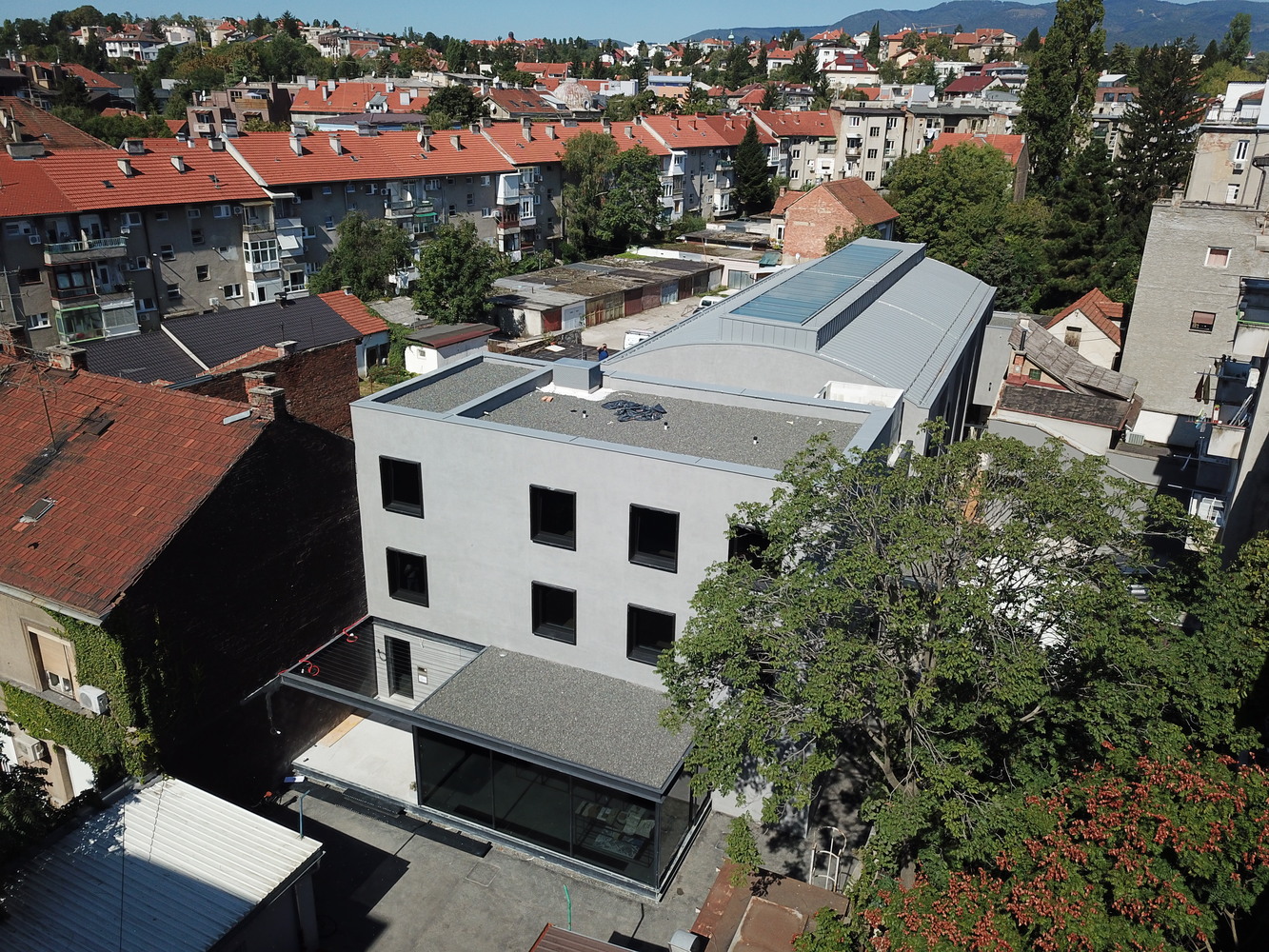
An old neighbourhood cinema built into the back streets near Kvatric. In their redesign, 3LHD preserved the best features from this early example of concrete engineering in Croatian architecture. They added a glass pavilion at the entrance, atriums and skylights, flooding the former darkness with the natural light needed for its new purpose as an event and work space.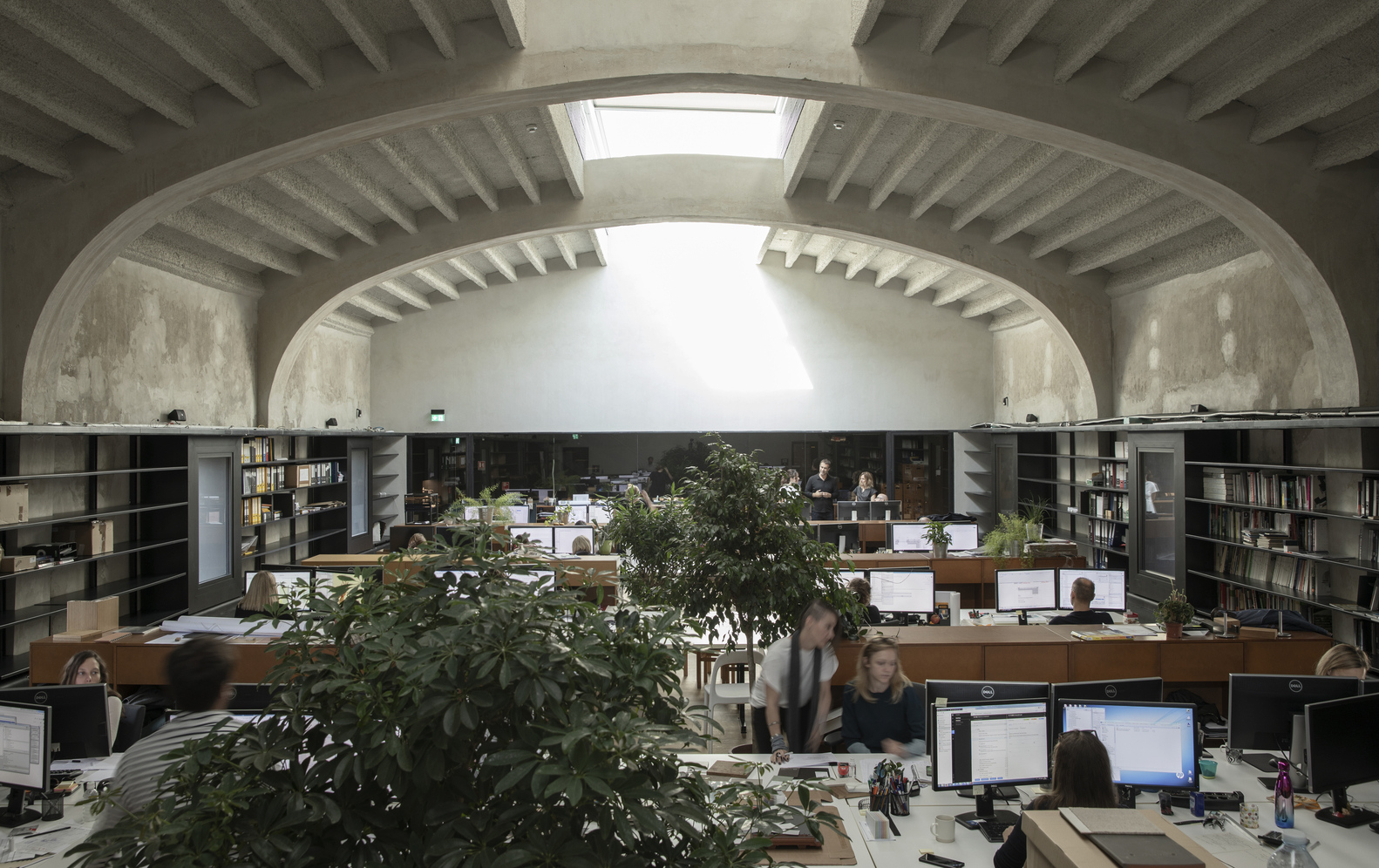 © Jure Živković
© Jure Živković
Grand Park Hotel, Rovinj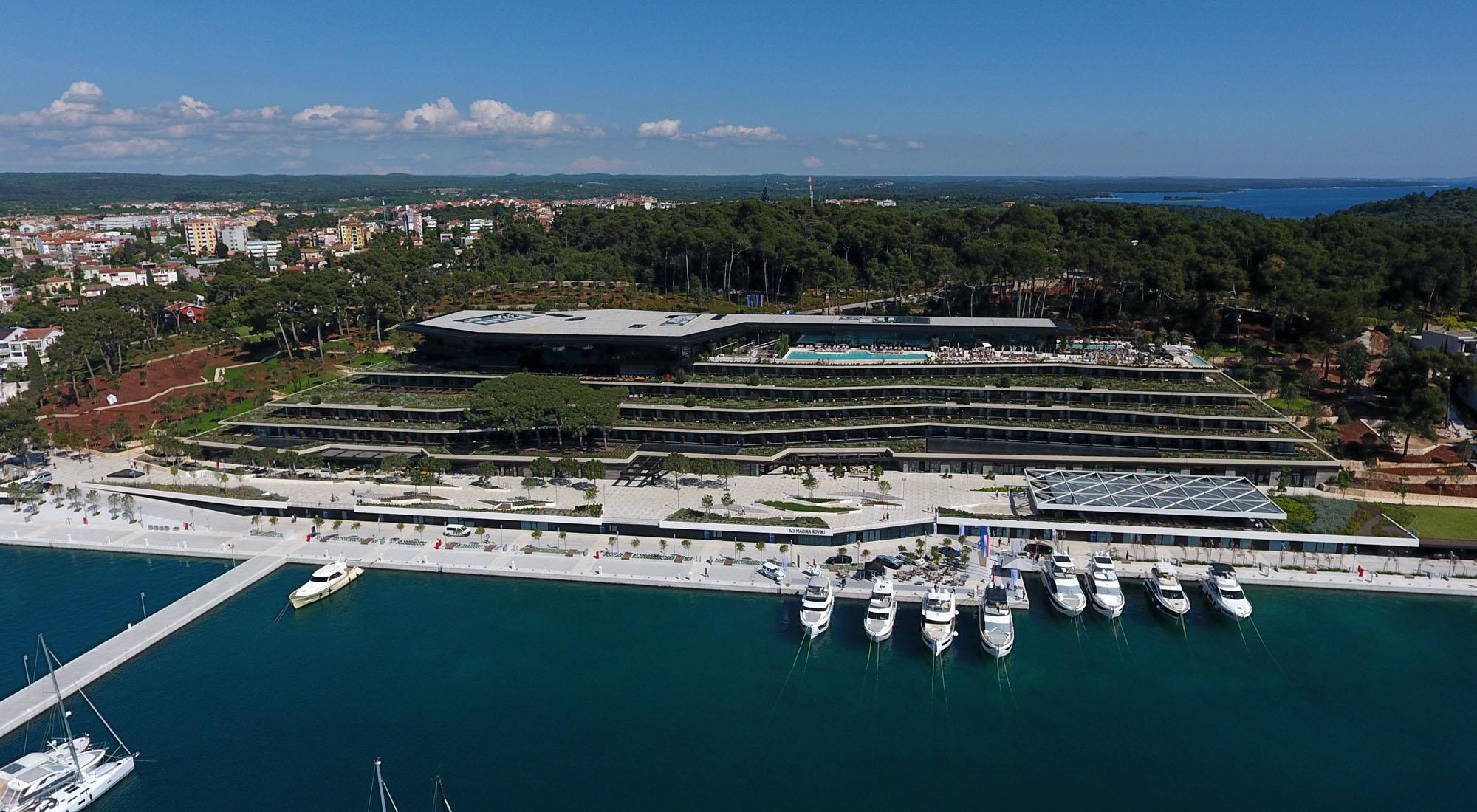
Sprawling widely across six stepped levels, the new luxury Grand Park Hotel and spa could easily have looked a long swipe of concrete. But, by places greenery on each of its staged roofs, architects 3LHD have ensured that no matter where you are in the 500-guest-capacity building, your view places you within a garden, looking out onto Rovinj Old Town and the expanse of the Adriatic. Croatian architecture at its most breathtaking.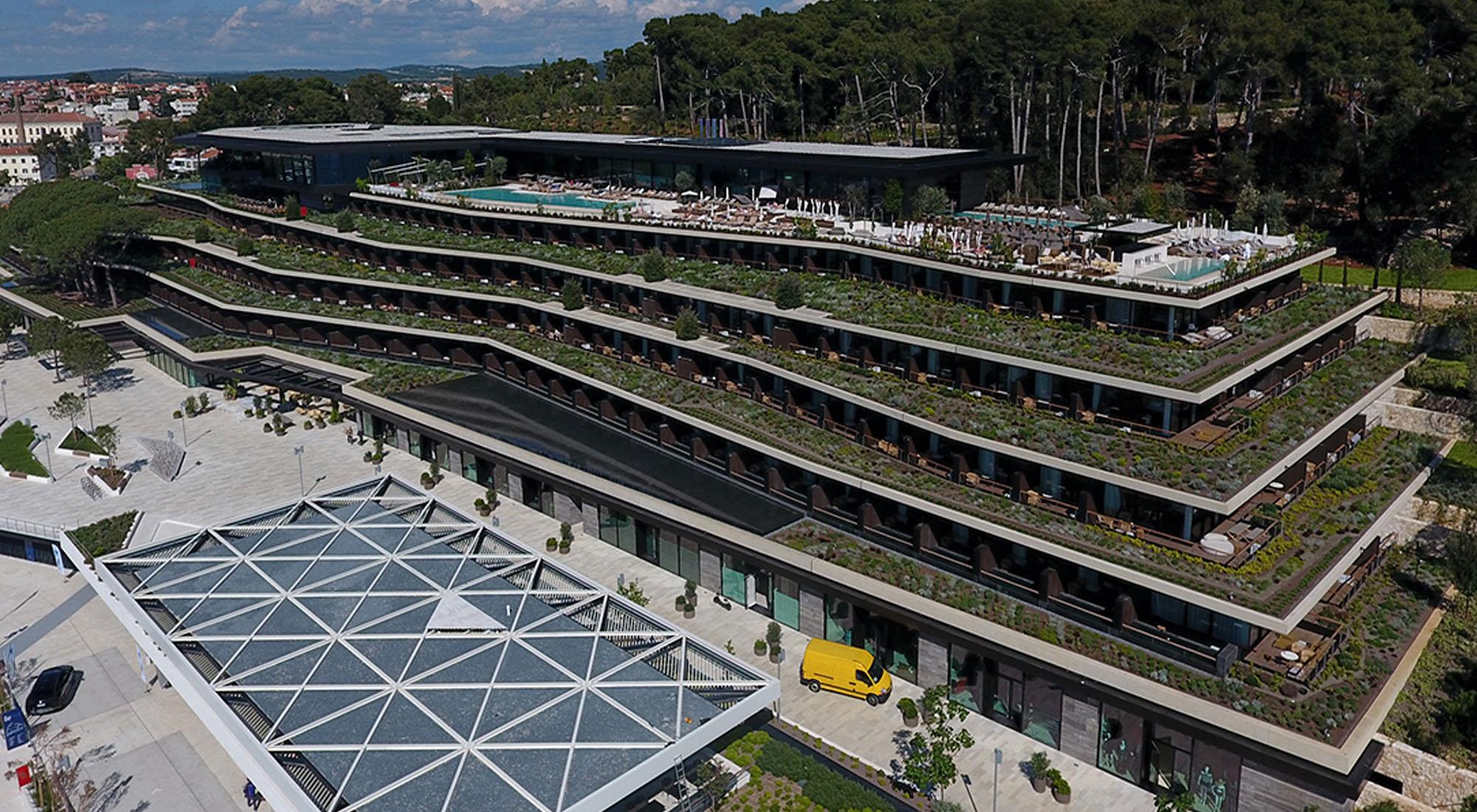 © Alukoenigstahl hr
© Alukoenigstahl hr
Ivanja Reka Elementary School, south Sesvete, east Zagreb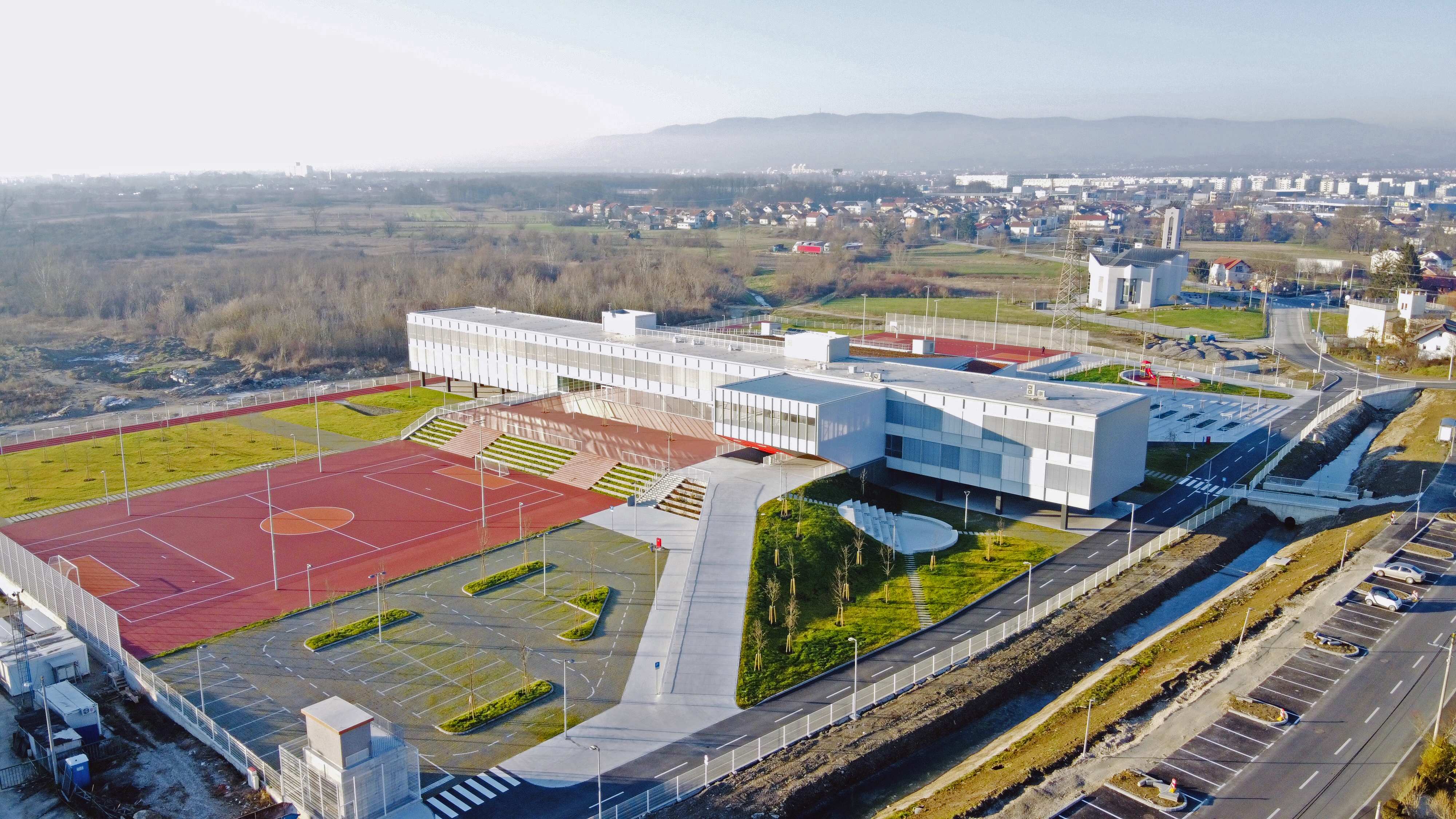
If every elementary school looked as pretty and was as well equipped as Ivanja Reka Elementary School in the south of Sesvete, eastern Zagreb, you could well believe daily attendance would never drop below 100%. Designed by a team of architectural authors (SUBMAP studios Marija Burmas and Ivo-Lola Petrić, and Jakša Kalajžić from JKA Arhitekti), the multi-level main building sits centrally, surrounded by sports, recreation and other facilities creating an impressive view for both those outside and within.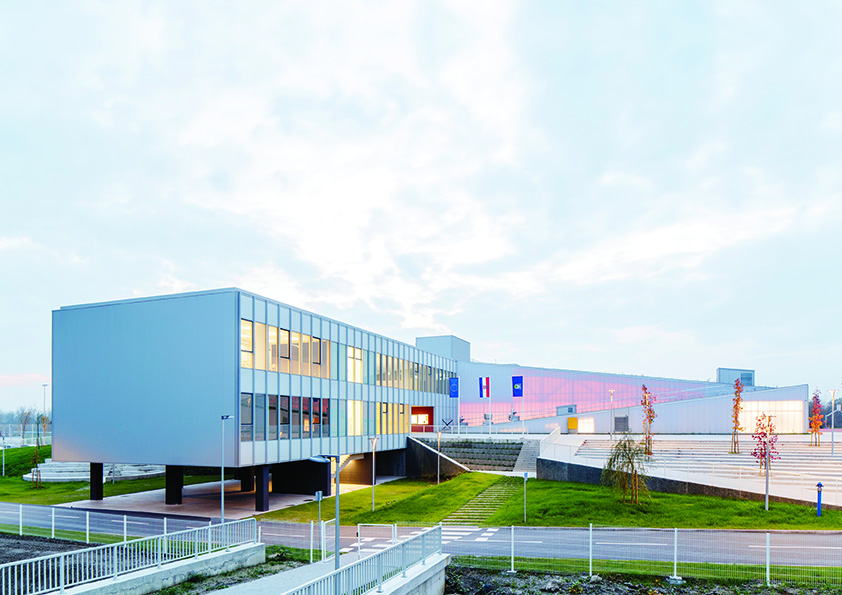 © Ivanja Reka Elementary School / Domagoj Blažević
© Ivanja Reka Elementary School / Domagoj Blažević
Roxanich Wine & Heritage Hotel, Motovun, Istria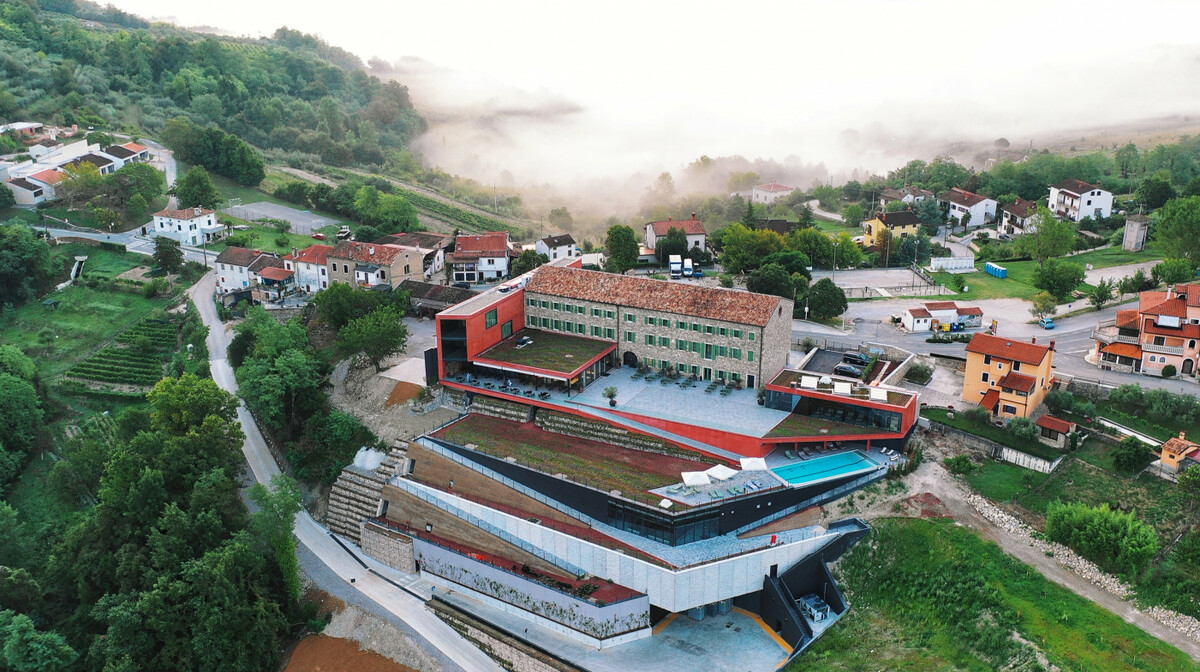
The view is unmistakably Istria. Vineyards carpet the land below and - rising above - the picturesque hilltop town of Motovun. Helmed architecturally by consistently bold Rijeka designer Idis Turato, this multi-level, multi-purpose redesign retains the traditional feel of its existing stone building and its purpose – there's a huge wine cellar beneath – but has opened up the space to give stunning views, not least over a sun deck that spectacularly reflects the sunrise and sunset. This is an active winery, with works and equipment all housed within its lower floors, not that you could tell from the 25 person capacity boutique hotel, restaurant and wine shop upstairs.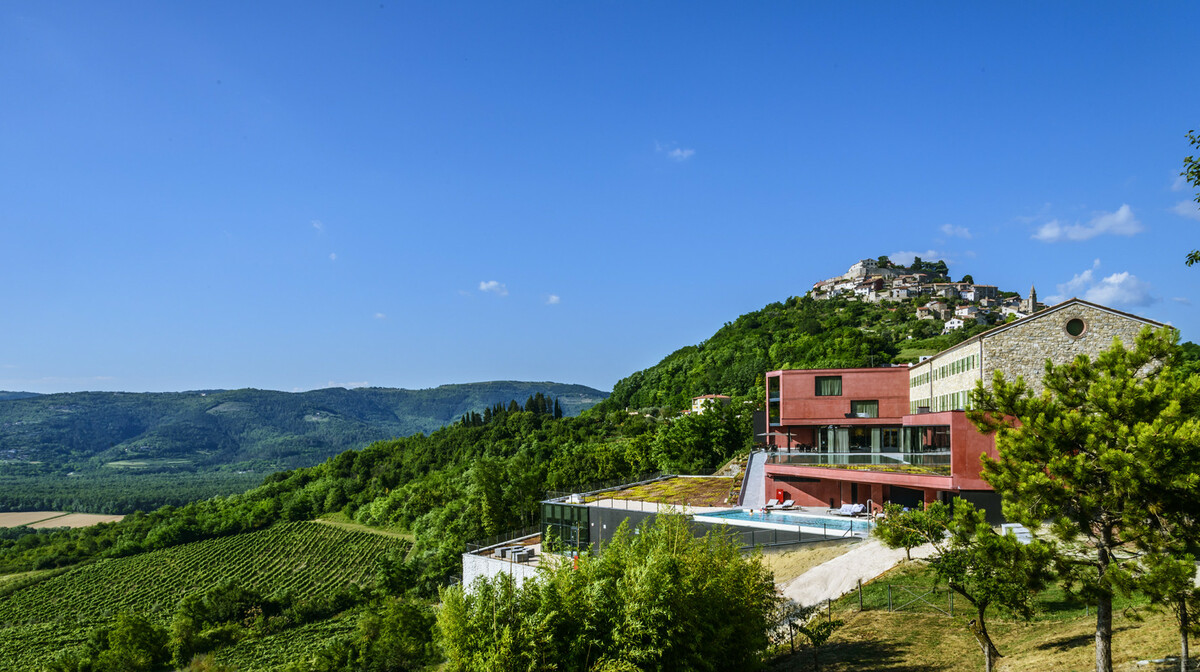 © Roxanich.hr
© Roxanich.hr
Four Houses for Four Brothers, Diklo, Zadar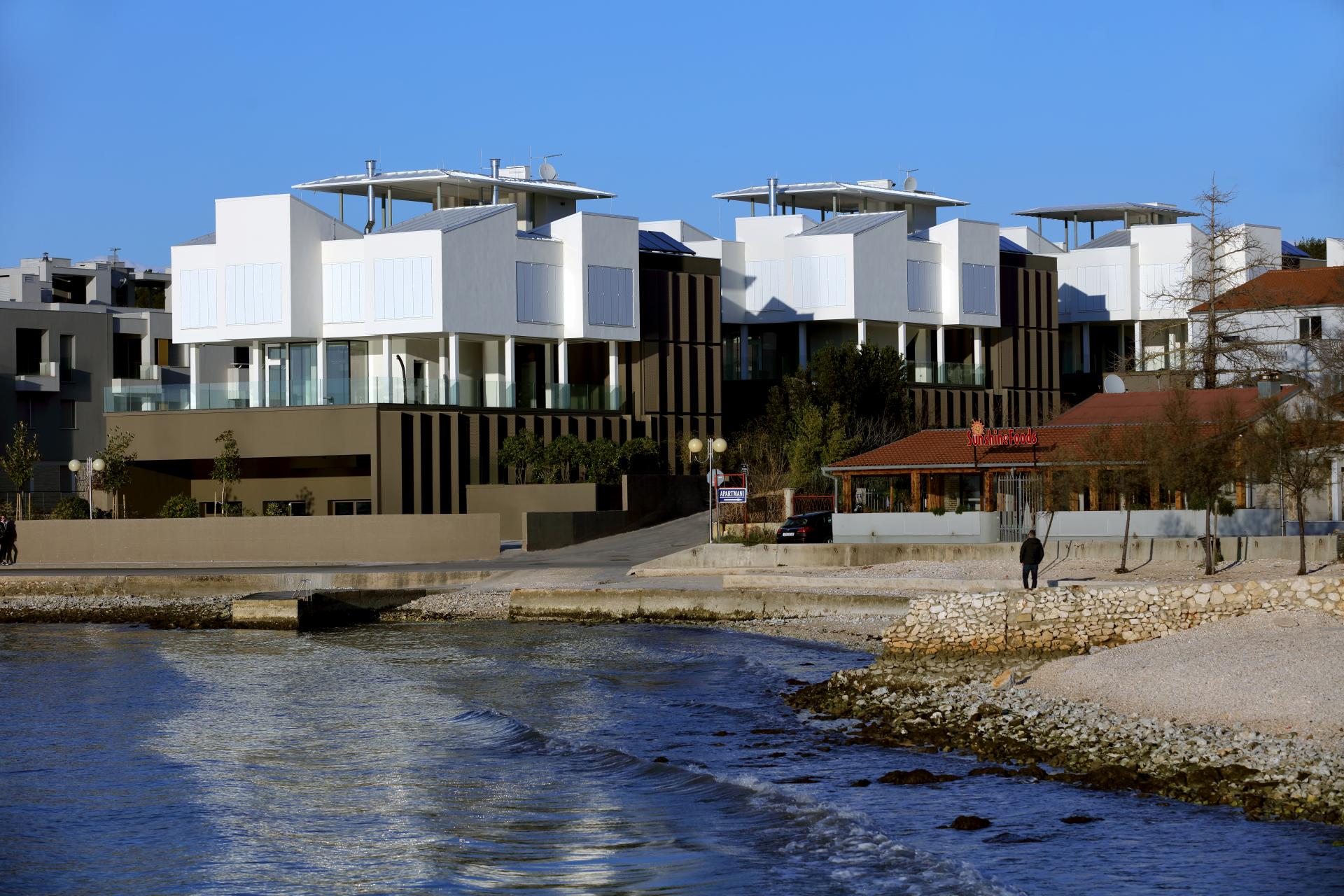
Judging from a theme of project titles used by architects Iva Letilović and Igor Pedišić, we're not sure that Four Houses for Four Brothers was actually commissioned by four brothers or that four live there. But, you could well believe they could. The ultra-modern set of independent houses, located next to a beautiful stretch of coast in a north Zadar neighbourhood, was specifically designed to address a distinctly Croatian reality – how to open up some of your dwelling to seasonal guests while you remain at home. The design separates the buildings clearly into separate quarters which allow privacy, comfort and minimal encroachment for both visitors and residents.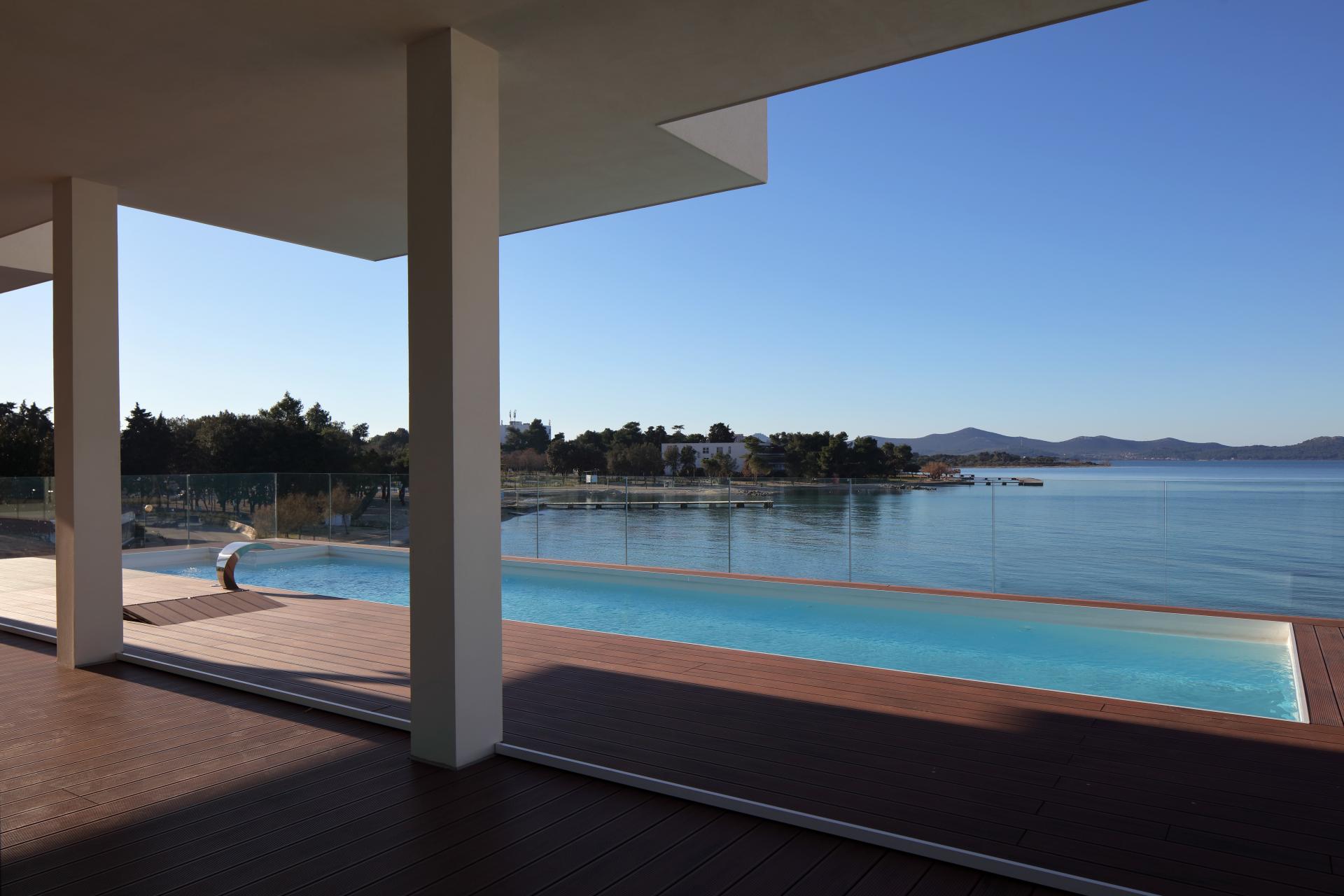 © Igor Pedišić
© Igor Pedišić
Galić Winery, Kutjevo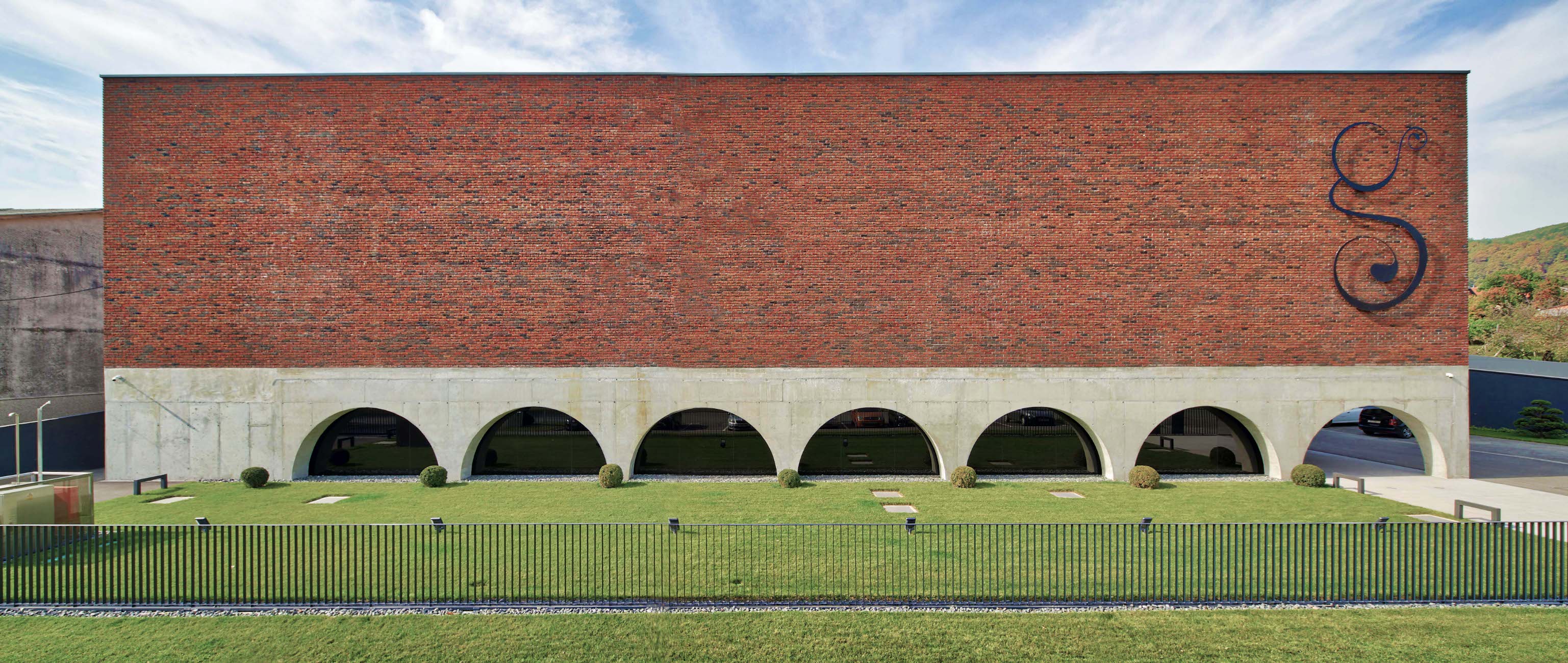
Award-winning outfit Zagreb-based studio Dva arhitekta have an existing, jaw-dropping design for a rural winery commissioned by famous makers Galic. However, that project, as yet, remains unrealised. But, their winery for Galic in the centre of Kutjevo town is complete. Melding the traditional and the contemporary, the upper section of the building is a bold and unblemished red brick, adorned with the winemaker's unmistakable logo. Beneath, concrete arches invite your eyes into the actual wine cellar – neat rows of barrels, protected behind glass walls that are set back from the facade. Brilliant!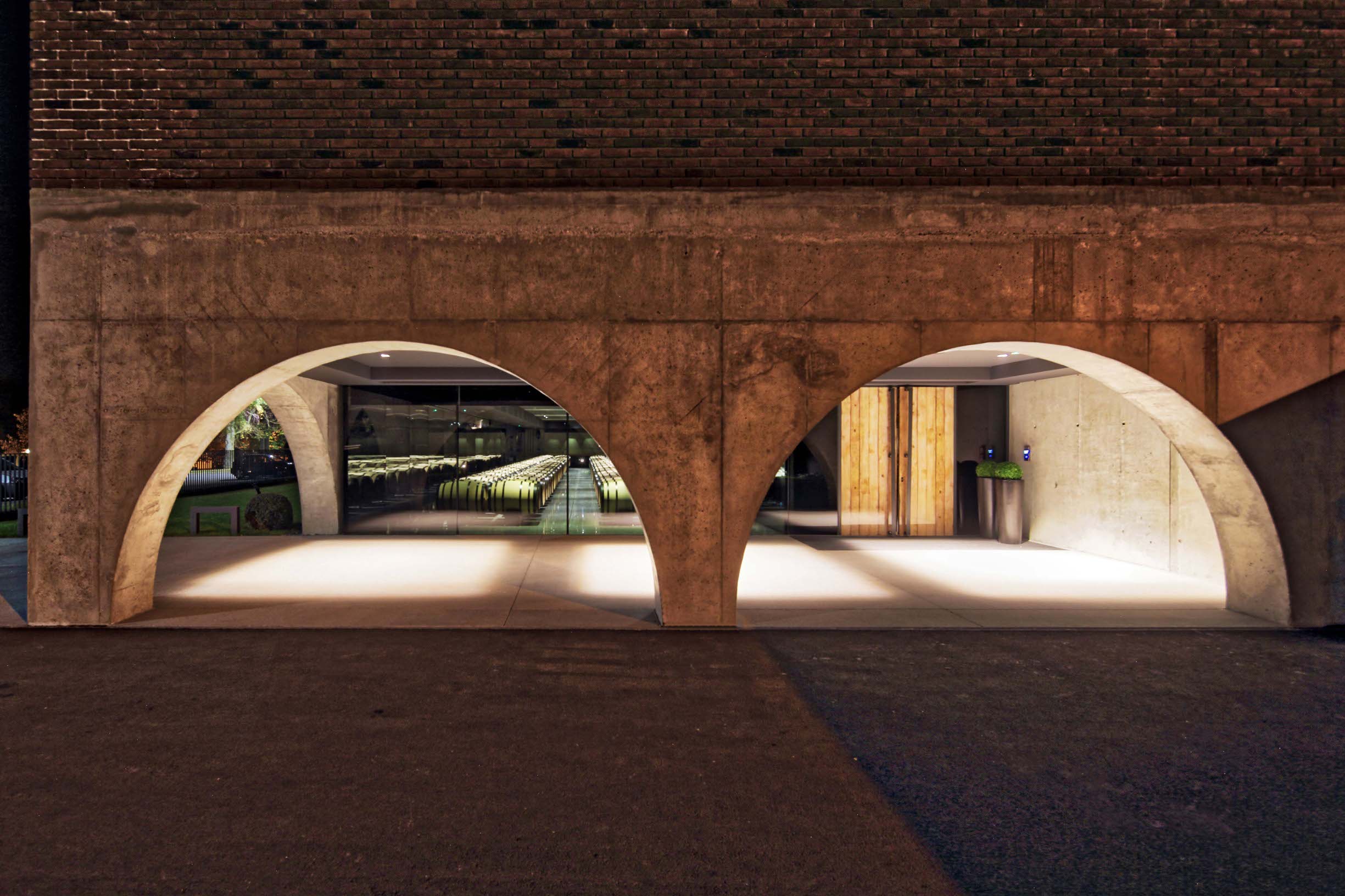 © Damir Fabijanić
© Damir Fabijanić
Seecel Centre, Zagreb
Designed as a regional centre for the development of entrepreneurs and its construction costs generously part-funded by European money, the Seecel Centre arrived long overdue and does not house its intended inhabitants. Such matters are best left for different articles as, here, we're concerned with the undeniable finery of this building's architecture and appearance. Holding space for accommodation, offices, communal collaboration, education and presentations, the five-floored building uses ultra-modern building materials and construction methods to make it low-energy, its great blocks of covered concrete, with glass windows set further back, echoing old fortifications. It was designed by Igor Franić who, in Croatia, is perhaps best known for the Museum of Contemporary Art in Zagreb and completed by him and his team at SZA / Studio za arhitekturu d.o.o.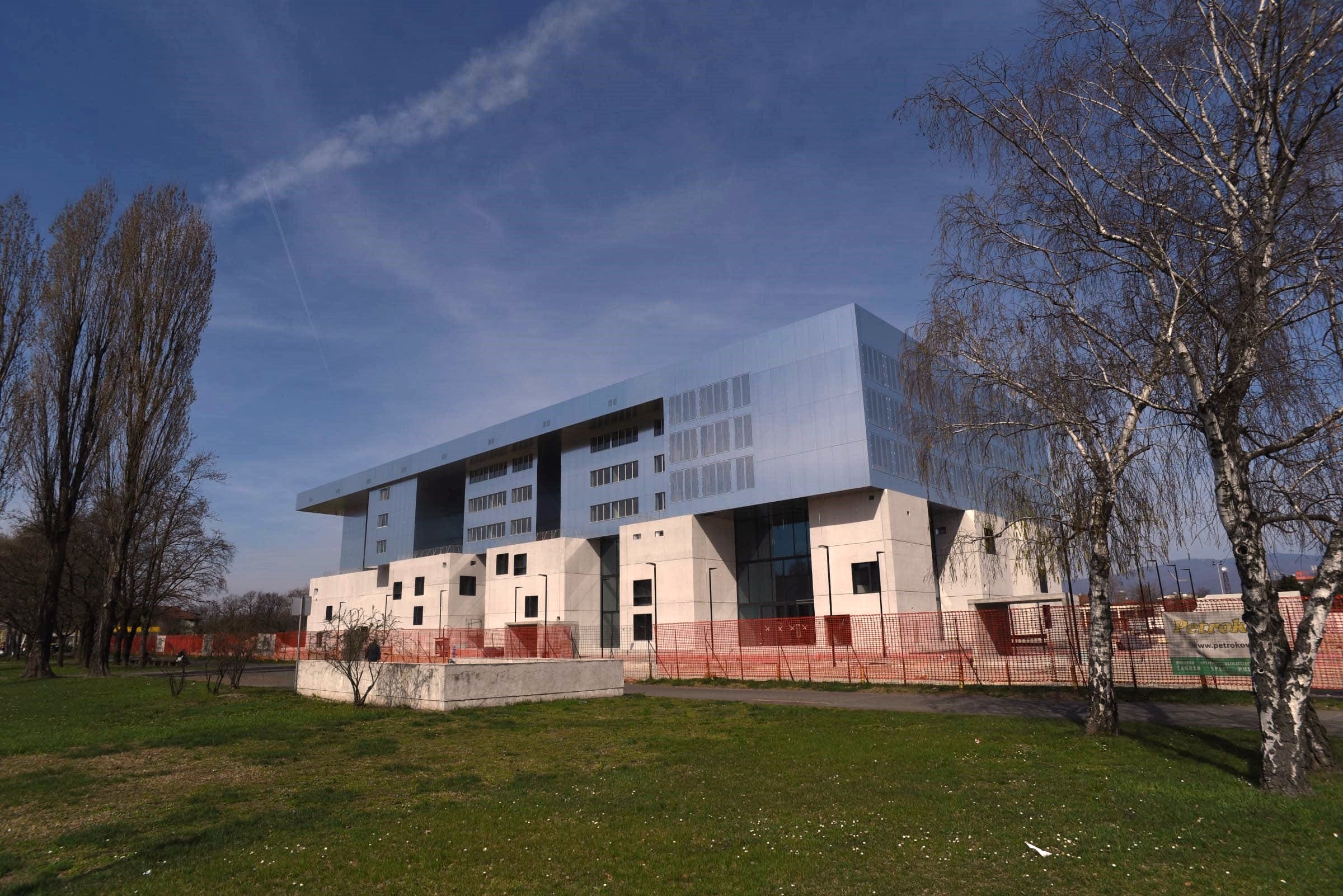 © Site Project d.o.o.
© Site Project d.o.o.
Trg Poljana, Šibenik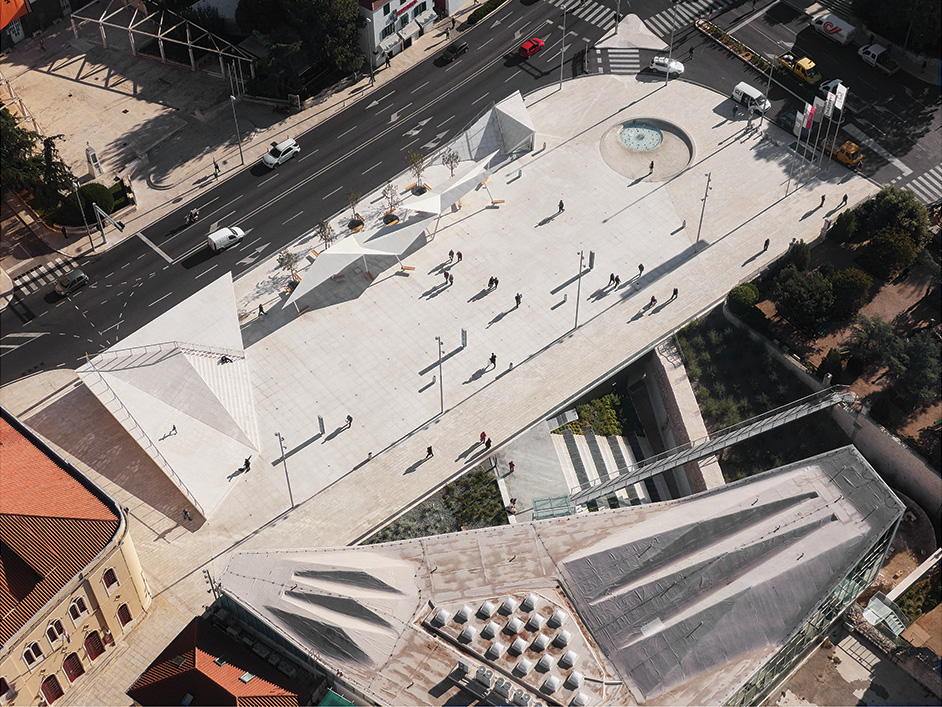
Not a small amount was asked of project architects Atelier Minerva from Dubrovnik in the task to create Trg Poljana in Šibenik. The site had long been earmarked for a much-needed, official town square – a place for events and public gatherings. But, the town was also woefully short on parking. By burying a multi-level car park beneath the open space, the architects successfully met both demands. Triangular shapes sit at an angle above shaded seating, echoing the inclines on the roof of the Juraj Šižgorić City Library opposite. Clever.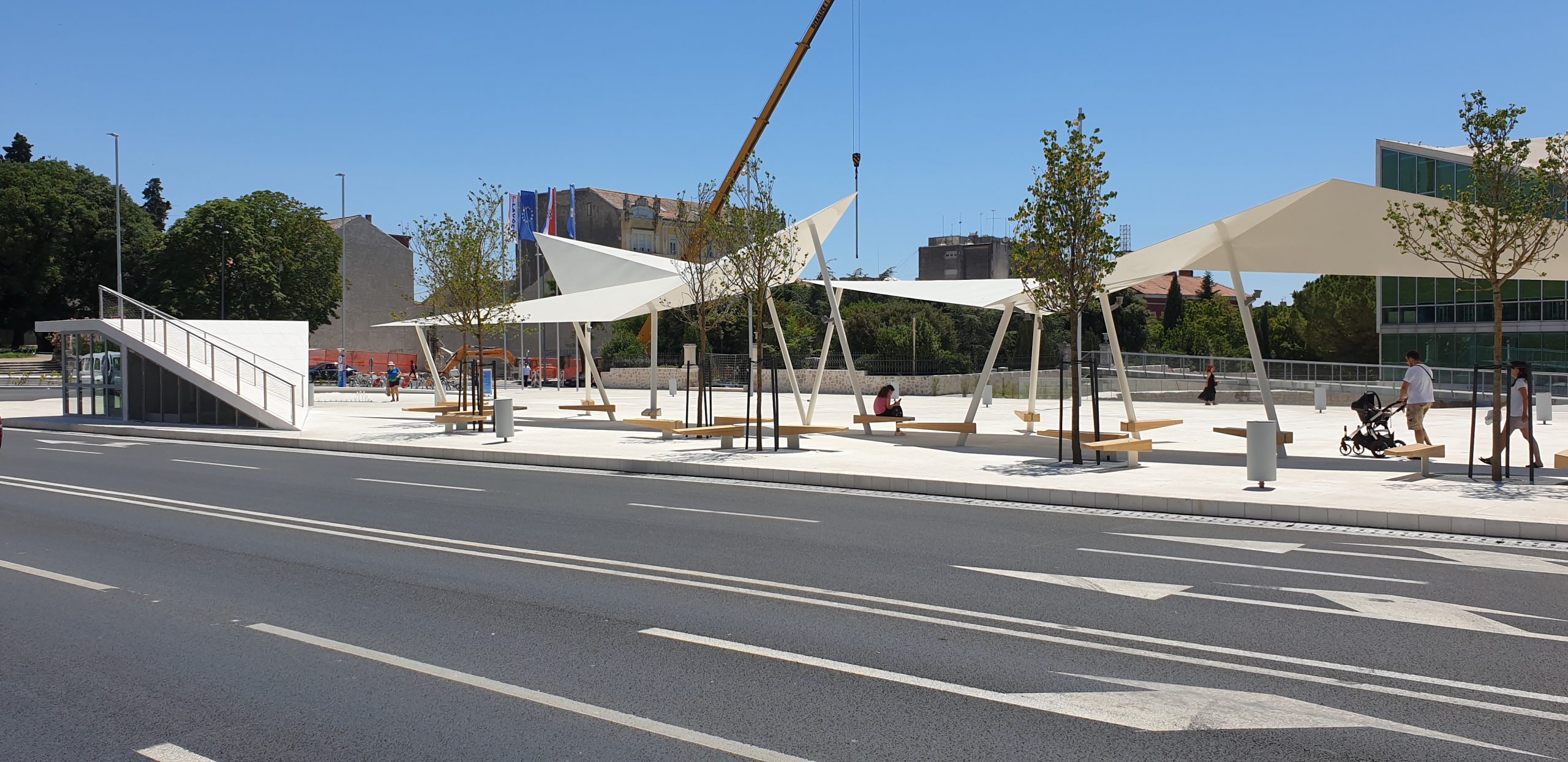 © Ervin Husedžinović / Eccos-inzenjering
© Ervin Husedžinović / Eccos-inzenjering
Homestead on Hartovski vrh, Žumberak, Zagreb County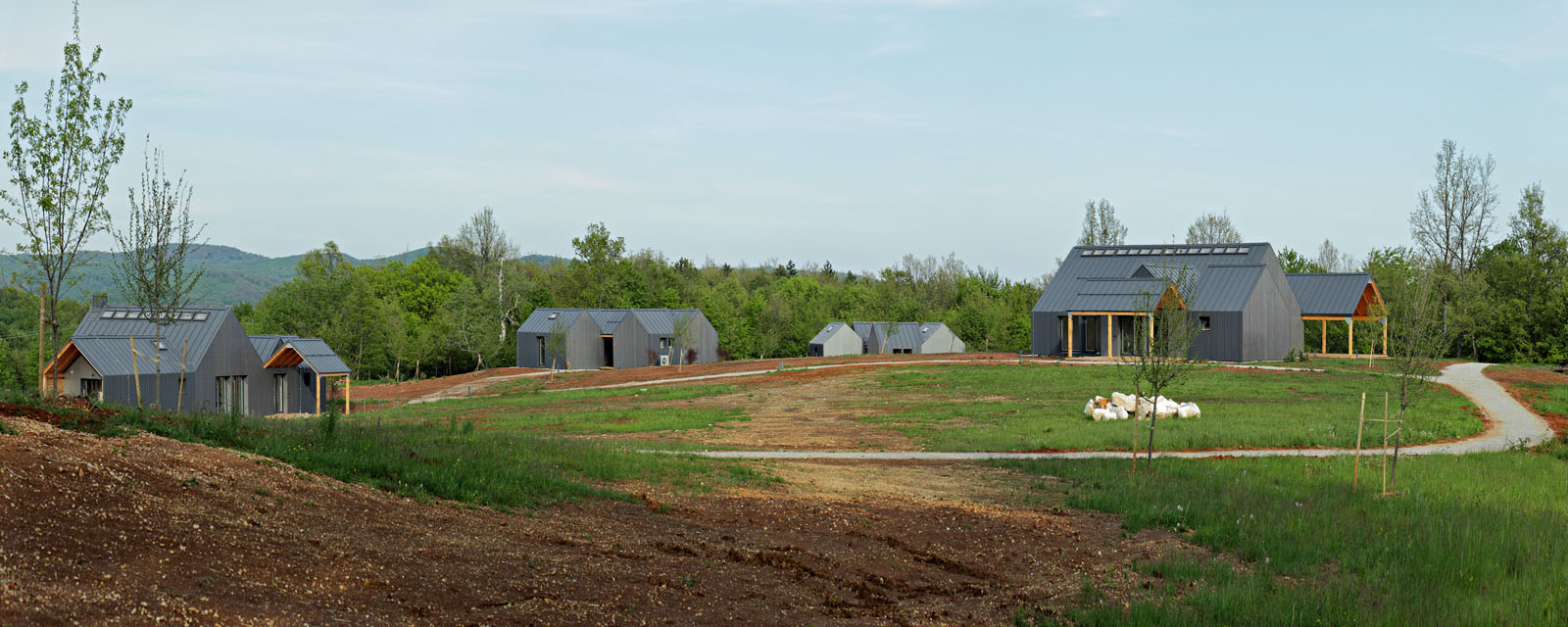
A collection of multi-purpose rural buildings, Homestead and Meditation Centre on Hartovski vrh was commissioned and designed for use by the Buddhist Center Zagreb. Their aim was to relocate activities such as chan, yoga, meditation, healthy living and teaching to a peaceful retreat outside of the city. Architects Branimir Rajčić and Mariela Žinić began the project in 2015, with the completed site arriving in 2019. Modern building materials are used, but not so the striking collection seems out of place within a partially agricultural setting. The set of buildings includes a residential dwelling and a larger hall for meetings and activities, both of which use large windows to allow the light and nature to flood in. © Robert Leš
© Robert Leš
Square of Traditional Crafts, Varaždin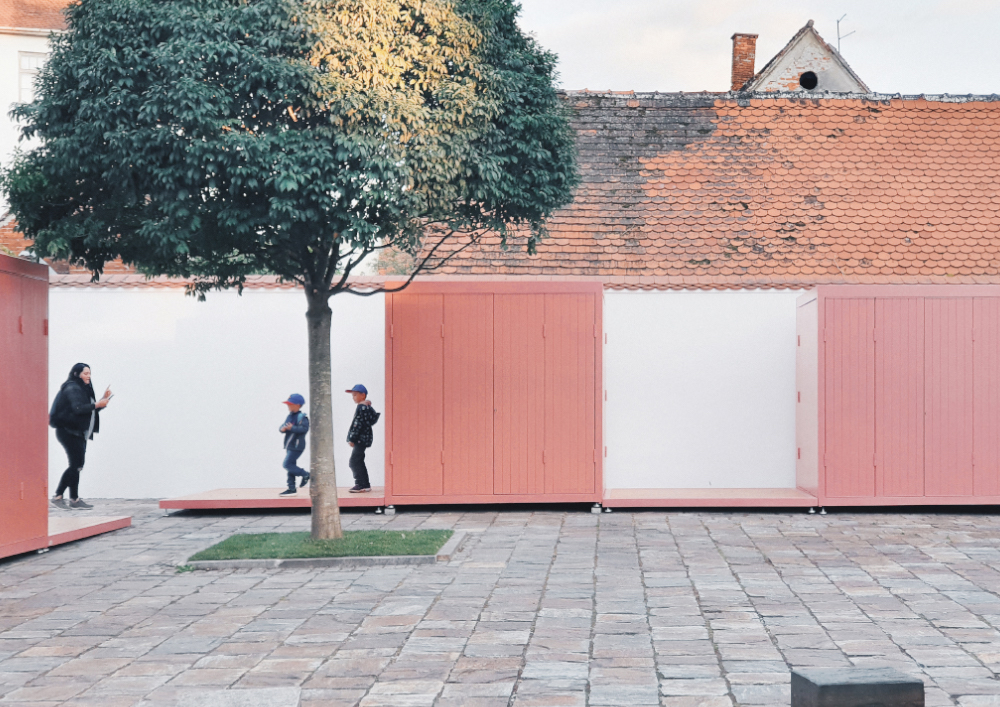
A tricky task was given to architects Studio Konntra – how to enliven and modernise a traditional old square in the centre of one of Europe's best-preserved Baroque Old Towns. They did this by constructing transportable kiosks to house small outlets for local artists and craftsmen that cater to visiting tourists who come to the square. When occupied during the day, the plain wooden interiors allows the crafts to take centre stage. But, after closing time, the outsides of the wooden doors are brightly coloured and adorned with paintings, a welcoming environment for residents to use at night.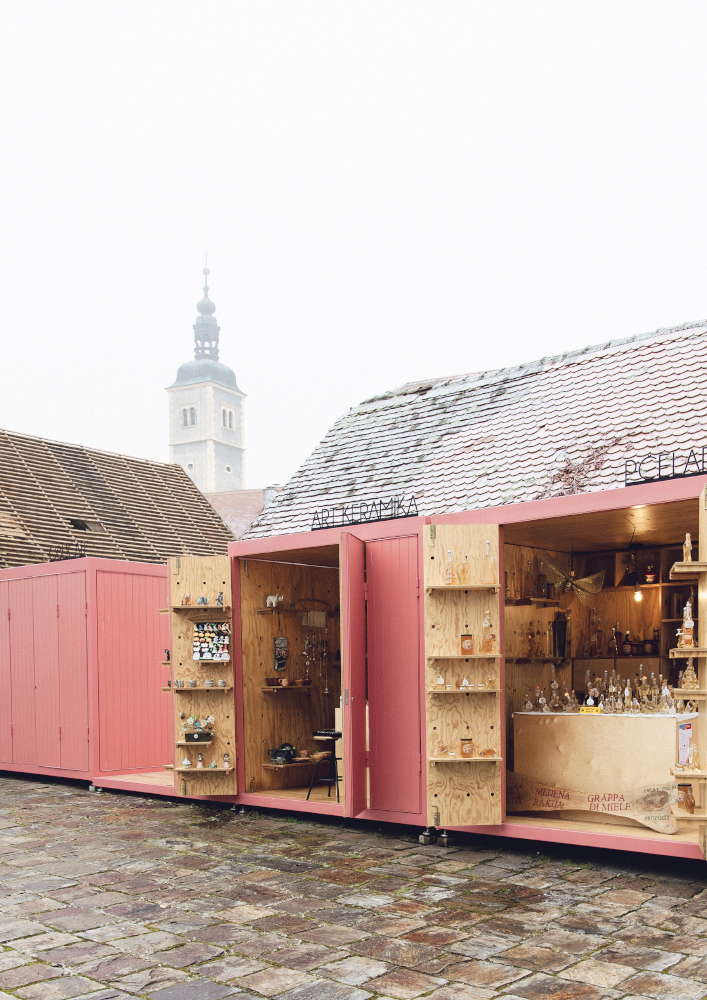 © Studio Konntra
© Studio Konntra
Reducing Crowds at Krka National Park: Skradin Port Readies to Welcome Tourist Boats
January 12, 2021 - Through a project that will last five months, the Skradin port will be enhanced by four new piers to accommodate up to eight tourist boats.
HRTurizam reports that the ancient port of Scardona is today a modern marina for boats arriving across Lake Prokljan and enjoys a reputation as a safe haven. From this summer, it will be enhanced by a well-maintained pier and main water entrance to Skradinski Buk, the most famous and most visited waterfall on the Krka River.
In order to protect and preserve the recognizable and authentic view of Skradin, the most modern construction techniques will be used to build a new pier, fully integrated into the environment. The project is funded by the Public Institution "Krka National Park".
Namely, the pier is being readied for tourist boats in Skradin, and the works will last for five months. Landscaping the port on the maritime domain, managed by the Public Institution "Krka National Park", will begin on January 15, 2021, within which four new piers will be implemented to accommodate up to eight tourist boats. Furthermore, 145 meters of shoreline will be built, which will ensure additional stability of the city waterfront and significantly improve the current conditions of the coast.
It is an important infrastructure project that will reduce the creation of crowds when boarding and disembarking the entrance to NP Krka.
"Constructing the port in Skradin is one of the significant projects for the Public Institution 'Krka National Park' which will reduce the creation of crowds when boarding and disembarking the entrance to Krka. Visitors will be scheduled so that the time spent thus far waiting in line can be used for a quality tour of Skradin," pointed out the director of the Public Institution "Krka National Park" Nella Slavica.
In addition to the possibility of buying park tickets online, visitors will be able to book a departure date from Skradin and return from Skradinski Buk, adds Slavica, and emphasizes that this will increase the quality of service and customer satisfaction and thus directly affect the time spent in Skradin and Šibenik-Knin County.
For the latest travel info, bookmark our main travel info article, which is updated daily.
Read the Croatian Travel Update in your language - now available in 24 languages.
Croatia Music Festivals Return in 2021... including Exit Festival?
November 17, 2020 – After an absence of one season, Croatia music festivals return in 2021. Tickets for some of the biggest events are now on sale and, in today's media, it's suggested Croatia could even host 2021's Exit Festival as it is forced to move from Novi Sad, Serbia. Exit is the biggest music festival in the region.
At the Croatia music festivals site near Tisno, Murter island, 2020 was the quietest summer in almost a decade. Since 2012, the sprawling accommodation and beach complex has played host to Croatia music festivals running consecutively throughout the summer. Each attracting upwards of 5000 international visitors, summers on the beach at The Garden Tisno were one long party of dancing, drinking, partying and music. But, in 2020 everything fell silent.
As reported earlier in Total Croatia News, the festival hosts in Tisno took the opportunity to make improvements to the site in preparation for the return of events. That return is now almost certain to be 2021.
Tickets for the 2021 editions of all the major brands of international Croatia music festivals taking place in Tisno are already on sale. With the full calendar of 2020 Tisno festivals having been cancelled, many attendees have simply held onto their tickets. These tickets are now valid for 2021's rescheduled events. Dimensions, Hospitality On The Beach, Love International, Suncebeat, Outlook Origins, Defected Croatia and Dekmantel Selectors are the festivals already announced for summer 2021 in Tisno.
And far from being a modest return, could 2021 be Croatia's peak year as a host nation? In today's Jutarnji List, it is suggested that Croatia might become the new home for Exit Festival, usually held in Novi Sad, Serbia.
Provisions for workers within the events industry during the pandemic have been met differently across individual nations. In Croatia, the industry-wide crisis was highlighted earlier in 2020 by many famous event venues being lit in red. In Serbia, Exit Festival has incurred debts due to its cancellation and, according to Jutarnji List, the event is faced with losing its workforce due to a lack of financial support.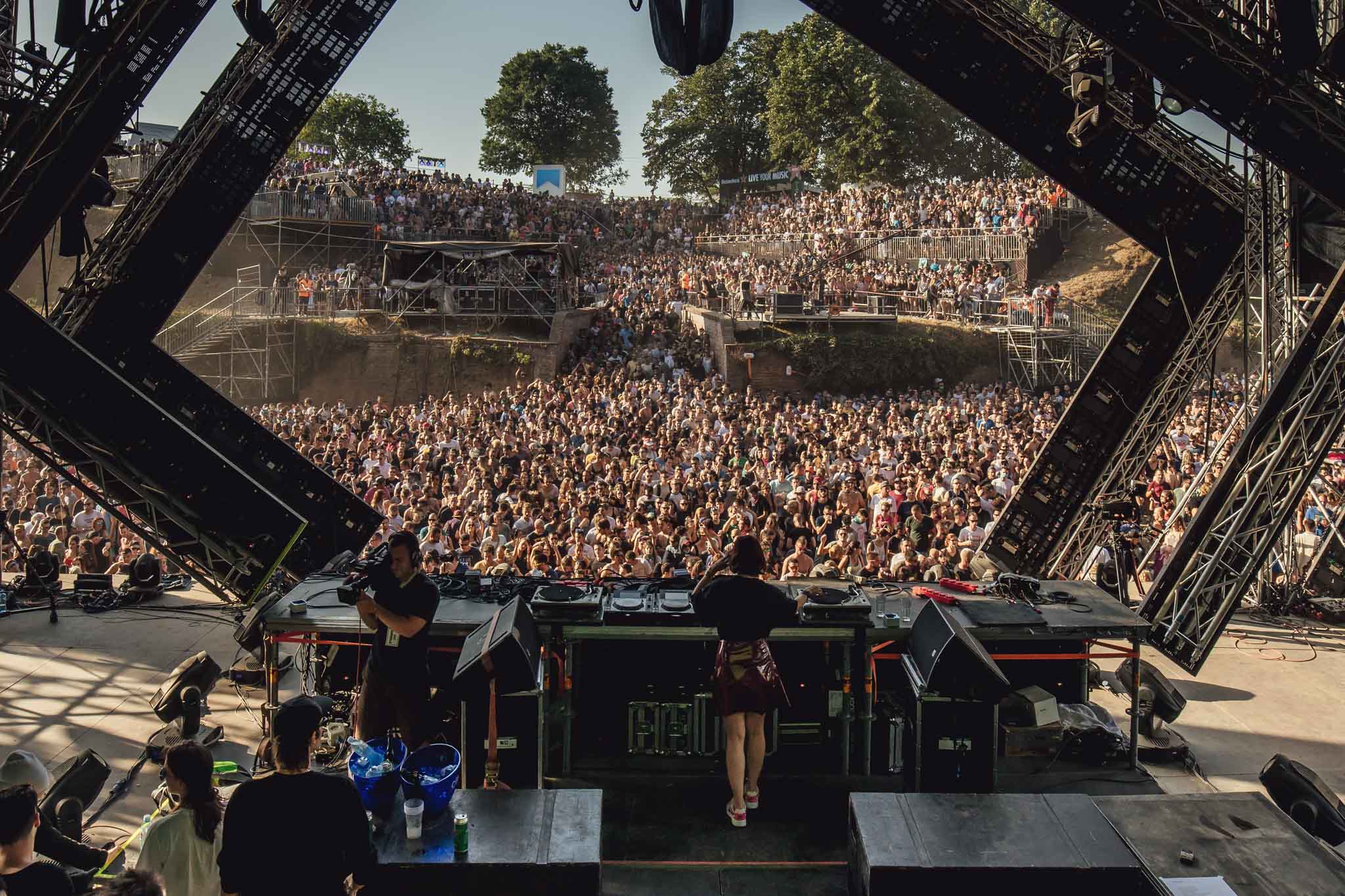 Exit Festival is the largest event of its kind in the region. It is currently held in Novi Sad, Serbia. In 2021, could it become one of the Croatia music festivals? © Exit Festival
Exit Festival is the largest event of its kind in the region. It is currently held in Novi Sad, Serbia. In 2021, could it become one of the Croatia music festivals? © Exit Festival
One route available to the event organisers is relocating Exit. As its organisers already hold one of the successful Croatia music festivals in Umag, Istria, Jutarnji suggests that Exit could possibly move to Croatia. Before fans of Croatia music festivals get too excited at the prospect, it should be noted that Exit also hold successful events in Montenegro, which is also a very viable alternative host site. And, it should be remembered just how much Exit Festival puts into the local economy - Jutarnji report that, since Exit started, 200 million Euros in tourism has been gained by Serbia from this one event. The article also suggests that Montenegro values Exit 2021 being able to put a potential 30 million Euros into its budget, with the attached value of Montenegro tourism promotion being over one hundred million Euros. It is difficult to imagine such a cash cow so easily being allowed to leave Serbia without financial assistance to Exit being readdressed by Serbian authorities.
A fresh sense of optimism has emerged in recent days, as news of successful COVID-19 vaccines now places the end of the pandemic within sight. However, it could be autumn or winter 2021 before enough people are successfully vaccinated for us all to relax, especially when considering mass gatherings like music festivals. But, as was proved by Croatia music festivals in Sibenik during summer 2020, a template does exist for the successful hosting of large events and music festivals, regardless of the progress of vaccination by summer 2021.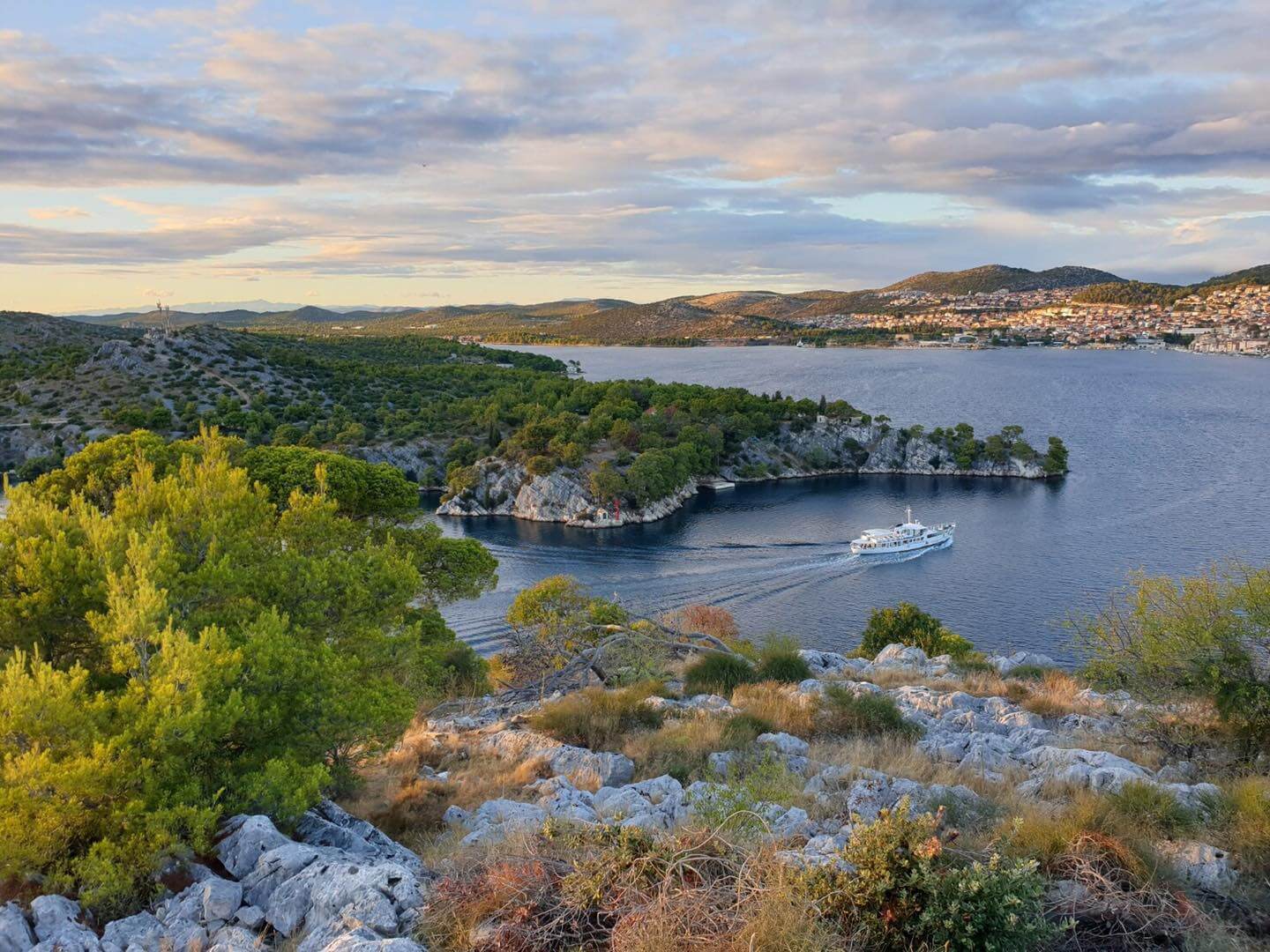 The Martinska site for Croatia music festivals hosted over 10, 000 people at events during summer 2020, creating a template by which large scale events can successfully take place while adhering to strict epidemiological guidelines © Seasplash / Pozitivan Ritam
The Martinska site for Croatia music festivals hosted over 10, 000 people at events during summer 2020, creating a template by which large scale events can successfully take place while adhering to strict epidemiological guidelines © Seasplash / Pozitivan Ritam
As reported in TCN at the end of this summer, the Martinska music festival site near Sibenik welcomed over 10, 000 festival-goers across their 2020 season. Adhering to the strictest epidemiological guidelines, the festival site recorded zero cases of COVID-19 from its attendees. Whether or not everyone has received a vaccination shot by next summer, and regardless of whether Exit Festival is among them, fans should confidently expect the welcome return of Croatia music festivals in 2021.
Organisers of the Suncebeat festival visit the Croatia music festivals site in Tisno during summer 2020 to see new improvements awaiting those who attend 2021's events
New Measures in Sibenik-Knin County: Cafes to Close at 10 pm
November 11, 2020 - A look at the new measures in Sibenik-Knin County as cafes must shut at 10 pm starting Thursday.
Dalmatinski Portal reports that in the past 24 hours in Sibenik-Knin County, 69 people were infected with COVID-19. These are 17 from the area of Sibenik, 11 from the area of Drnis, nine from the area of Knin, five from the area of Vodice, three from the area of Pirovac, two from the area of Bilice, and one person each from the area of Promina, Tribunj, Primosten, Ruzic and Ervenik.
Eight residents and one employee of the Mihek Home for Mentally Ill Adults, Sibenik branch, also became infected. Furthermore, eight people who currently reside in this county, and their place of residence is elsewhere, were infected.
The Sibenik Hospital Department of Infectious Diseases is treating 23 people, one of whom is on a ventilator. Others have milder clinical symptoms and are in self-isolation. There are currently 215 active cases of COVID-19.
In the last 24 hours, 91 samples were tested for the SARS-CoV-2 virus. Currently, 700 people are under health supervision and self-isolation measures.
The National Civil Protection Headquarters, at the proposal of the Civil Protection Headquarters of Sibenik-Knin County, amended the Decision on introducing necessary epidemiological measures for Sibenik-Knin County, which enters into force tomorrow.
The decision prohibits holding all public events and gatherings of more than 30 people in one place, except for sports competitions where there may be a maximum of as many competitors and officials as allowed by the competition regulations for each sport. A maximum of 50 people may be present at professional art performances and programs, cinema screenings, and exhibitions in museums, galleries, and other exhibition spaces with strict adherence to all prescribed epidemiological measures and special recommendations and instructions of the Croatian Institute of Public Health.
The working hours of all types of catering facilities are limited until 10 pm. Visits to residents of social welfare institutions that provide accommodation services and exits of residents outside the premises and courtyards are prohibited unless conditioned for medical reasons.
At religious ceremonies indoors, the number of persons present is limited according to the space's size, so that at least 4 m2 of space must be provided for each person present. It is recommended to sports associations and other organized groups that do not participate in official competitions not to hold training, preparatory exercises, and recreational activities indoors.
It is recommended that private gatherings are not held. If a private gathering is still held, it is recommended to limit the gathering to members of the same or as few connected households as possible. It is recommended that sessions of representative bodies of local and regional self-government units be held via videoconference or other technologies for holding remote meetings.
It is recommended that employers organize work with the greatest possible distance between workers and maintain a minimum physical distance of at least 2 meters, whenever possible.
To read more about coronavirus in Croatia, follow TCN's dedicated page.
VIDEO: Large Poskok Vipers Seen and Filmed in Vodice
October 26, 2020 – One of the largest Poskok vipers has been spotted in the area around Vodice, another was filmed hanging from a tree
Autumn in Croatia is the time of harvest, when the land gives up its bounty in preparation for winter and spring renewal. Those taking part in the harvest near the Dalmatian town of Vodice are sure to be extra vigilant over forthcoming days as local media has reported sightings of poskok vipers in the local.
One local resident detailed to infovodice.com that they had seen a specimen of almost 100cm in length. This is the maximum size an adult can reach (they are usually only around 85cm). Another of the poskok vipers was filmed hanging from a tree.
Vipera ammodytes is known as the poskok in Croatia. This species of viper is only found in southern Europe and parts of the Middle East. Although commonly called the sand viper, it actually prefers to live on dry, rocky hillsides with sparse vegetation, although it can be found on the edges of woodland and in woodland clearings.
The most northerly regions in which poskok vipers can be found are southern Austria, north-east Italy and Slovenia. They can be found as far east as Georgia, Syria and eastern Turkey. They are most commonly found within the countries of the Balkan peninsula. © Plamen Grigorov
© Plamen Grigorov
In Croatia, it's possible to find them living throughout Dalmatia and Istria, on the islands of Krk, Pag, Vir, Ugljan, Pašman, Korčula, Hvar, Brač and Mljet and in the continental regions of Lika, Medvednica, Žumberak, Banovina, Kordun, Gorski kotar, Kalnik, Zagora and Hrvatsko Zagorje.
Poskok vipers are a protected species in Croatia. Although they carry the deadliest venom of any snake to be found in Europe, they do not usually attack people unless provoked. However, they can be provoked unwittingly.
Depending on the region and the temperature, in the autumn months, the snakes can climb into trees. They do so to keep warm and to hunt for birds which, alongside small mammals and lizards, form the base of their diets. They hunt larger prey by first biting with their venom, then tracking the poisoned prey until it succumbs to the bite. © Andrea Bohl
© Andrea Bohl
People are at particular risk to the vipers while they are in the trees as they can unknowingly walk close enough to the snake to make it feel threatened. Between August and the end of October, female poskok vipers give birth.
Poskok vipers can react unpredictably when they feel they are in danger. Some remain motionless and hiss loudly, some hiss and then flee, while still others will immediately attempt to bite. It is this unpredictability that gives poskok vipers their Croatian name – poskok meaning 'jumping' snake. The snake doesn't actually jump, but it can strike and bite faster than any other European snake. It coils itself over the back of its body and then throws its front towards its victim and has a considerable reach when doing so, of up to 40 centimetres.
On average, bites from poskok vipers account for around 25 hospitalisations each year in Croatia. Deaths occurring as a result of a bite are these days extremely rare. Although the snakes can be mistakenly disturbed in the autumn, the most common period for poskok bites on humans in Croatia is actually between May and June. The venom of poskok vipers is used to make antidote serum used to treat bites from all European vipers. Poskok vipers are farmed in some parts of Europe specifically for this purpose.
For the latest travel info, bookmark our main travel info article, which is updated daily.
Read the Croatian Travel Update in your language - now available in 24 languages.
Sibenik-Knin and Zadar Counties No Longer on Germany's Red List
October 1, 2020 - Sibenik-Knin and Zadar counties are no longer on Germany's red list for travel.
HRTurizam reports that last night, the German Robert Koch Institute revised the list of countries that are on the red list, that is, high-risk countries for travel during the coronavirus pandemic.
What is important to point out is that Sibenik-Knin and Zadar counties are no longer on the red list, so it is now possible to travel to those Croatian counties.
The following counties are still on the red list in Germany: Brod-Posavina, Dubrovnik-Neretva, Lika-Senj, Pozega-Slavonia, Split-Dalmatia, and Virovitica-Podravina.
Declaring an area at risk means that those returning from high-risk countries on holiday must be tested for coronavirus and remain in self-isolation until they receive a negative test result.
Recall, on September 29, the Slovenian government adopted changes to the countries on the lists unsafe for travel during the corona era.
"The Government took note of the Assessment of the Epidemiological Situation in the European Union and the Schengen Area, the Balkans and selected Third Countries, the Assessment of the Epidemiological Situation in the Countries and the European Commission's Re-open EU Recommendation, as well as the Criteria per 100,000 inhabitants by country prepared by the National Institute of Public Health. It assessed the professional justification of the restrictions from the Ordinance on ordering and implementing measures to prevent the spread of COVID-19 at border crossings at the external border, at checkpoints at internal borders, and in the Republic of Slovenia and decided that these restrictions should continue to apply," said the Slovenian Government on its website.
Thus, the red list includes 16 EU Member States and the Schengen area, with only administrative units with a poor epidemiological picture and 114 third countries with an uneven distribution of infections.
Regarding Croatia, the red list now includes Brod-Posavina, Dubrovnik-Neretva, Lika-Senj, Pozega-Slavonia, Sibenik-Knin, Split-Dalmatia, Virovitica-Podravina and Zadar counties.
The orange list now includes the Croatian counties bordering the country. This means that from these areas, Slovenia can be entered with a negative coronavirus test and without having to quarantine.
Serbia and Poland are on the green list again, together with Cyprus, Latvia, Lithuania, Liechtenstein, and Finland, while neighboring Italy has been withdrawn from the green list.
For the latest travel info, bookmark our main travel info article, which is updated daily.
Read the Croatian Travel Update in your language - now available in 24 languages
New Measures: Maximum 50 People at Weddings and Funerals in Sibenik-Knin County
October 1, 2020 - New coronavirus measures were announced today for weddings and funerals in Sibenik-Knin County. A closer look.
Dalmatinski PortalDalmatinski Portal reports that at the proposal of the Civil Protection Headquarters of Sibenik-Knin County, the necessary epidemiological measures for this area are being introduced. Thus, a maximum of 50 people can be present at wedding ceremonies, and they can last up to 2 hours. Exceptionally, up to 100 people may be present at wedding ceremonies. Such ceremonies may be held only on premises that can regularly organize ceremonies for at least 3 times the number of people than will be present at the wedding ceremony.
Funerals may be attended by a maximum of 50 people, and condolences must not be expressed through close contact; in all enclosed spaces where public or economic activities are carried out, and events, cultural or other programs, religious or other social gatherings take place, the use of face masks or medical masks is mandatory.
Residents of homes for the elderly and infirm are prohibited from leaving unless it is conditioned by medical reasons, and visits to mobile users of homes for the elderly and infirm are allowed in the courtyards of the facilities for 30 minutes. Visits to immobile users of homes for the elderly and infirm are allowed in closed homes for 15 minutes, and only one person can visit the user at a time.
Visits are permitted in accordance with a plan established by the director or a person authorized by them, provided that visitors do not have a fever, wear protective masks or face masks and protective gloves, and do not come into direct contact with other users.
For the latest travel info, bookmark our main travel info article, which is updated daily.
Read the Croatian Travel Update in your language - now available in 24 languages.


